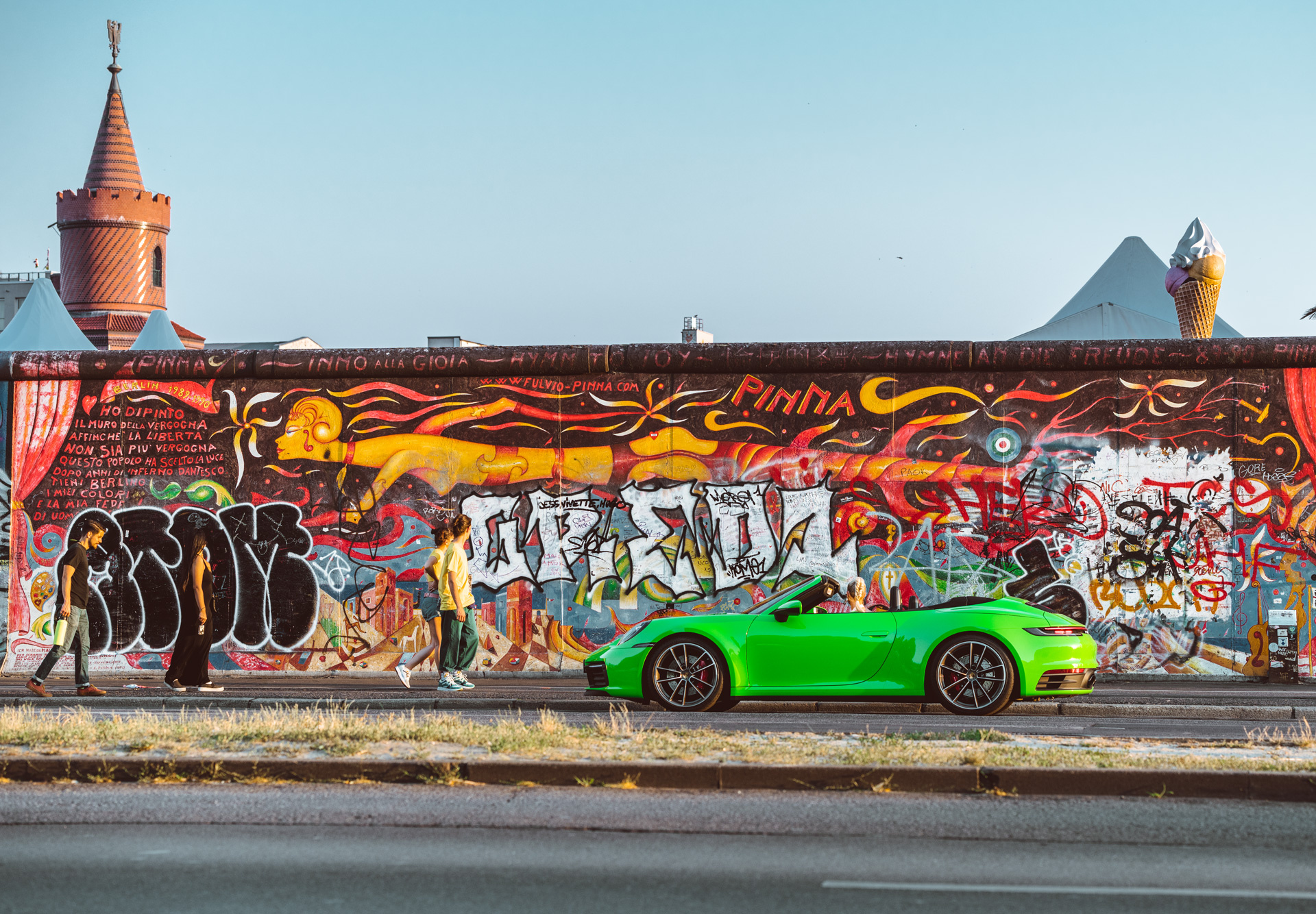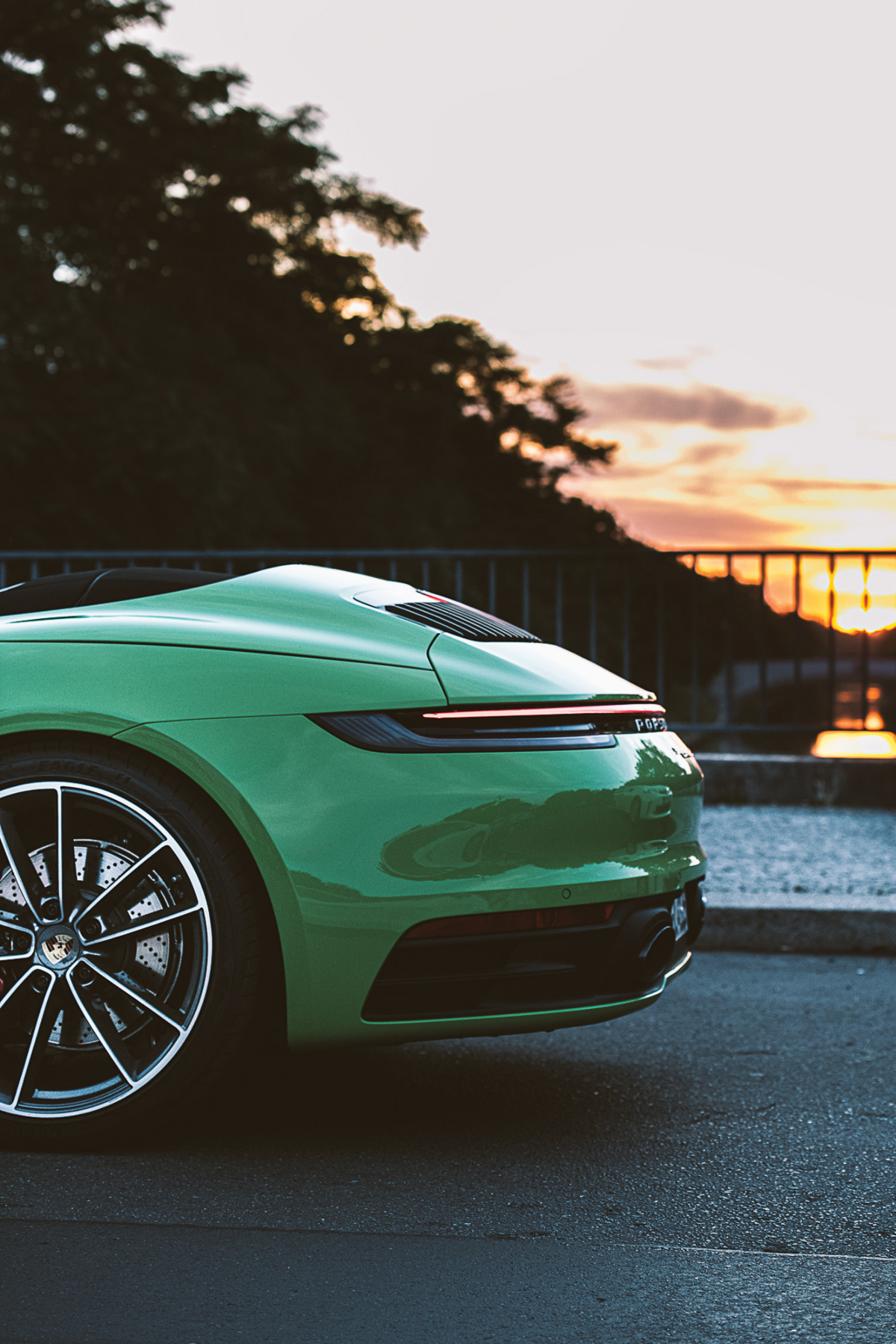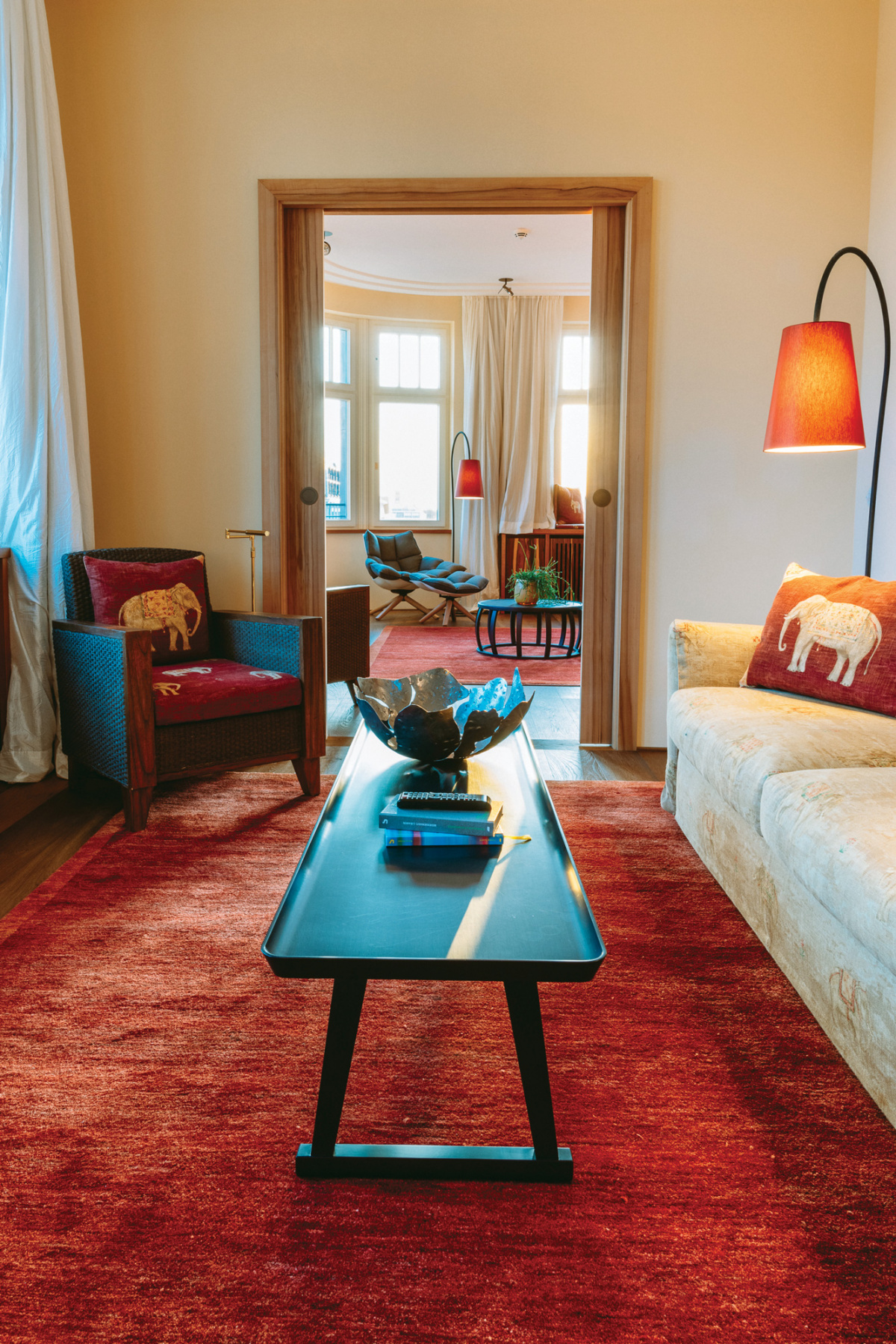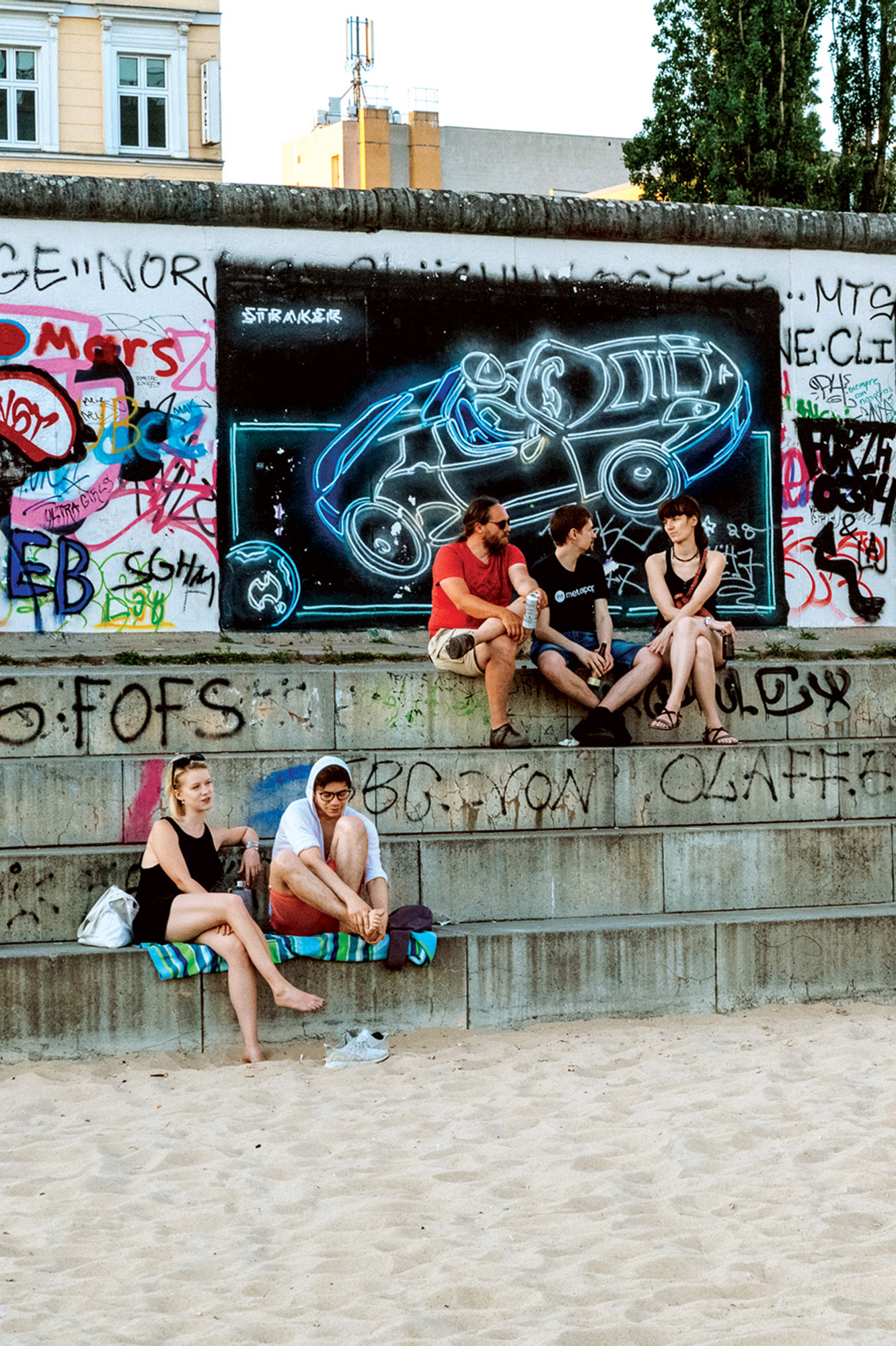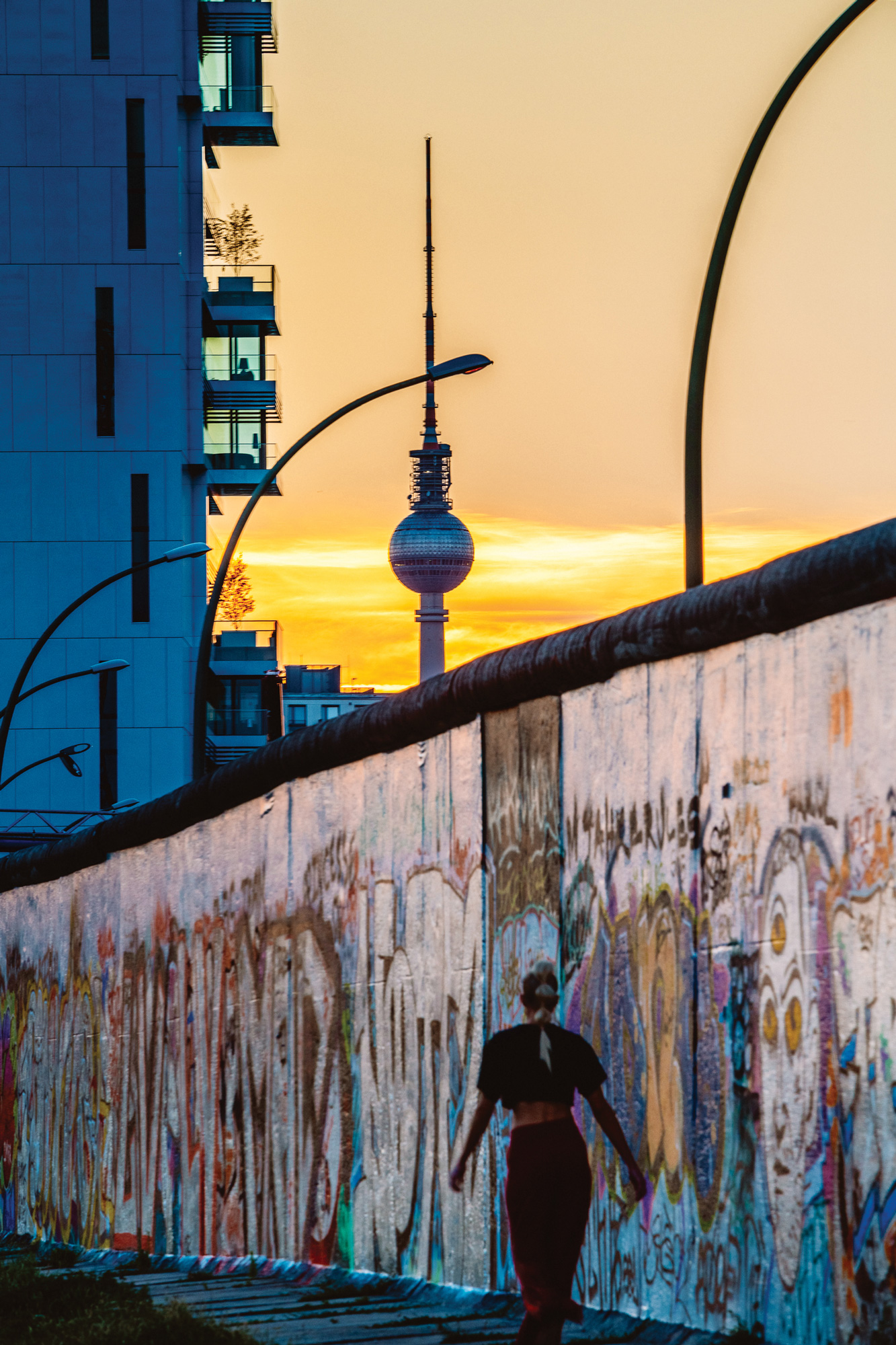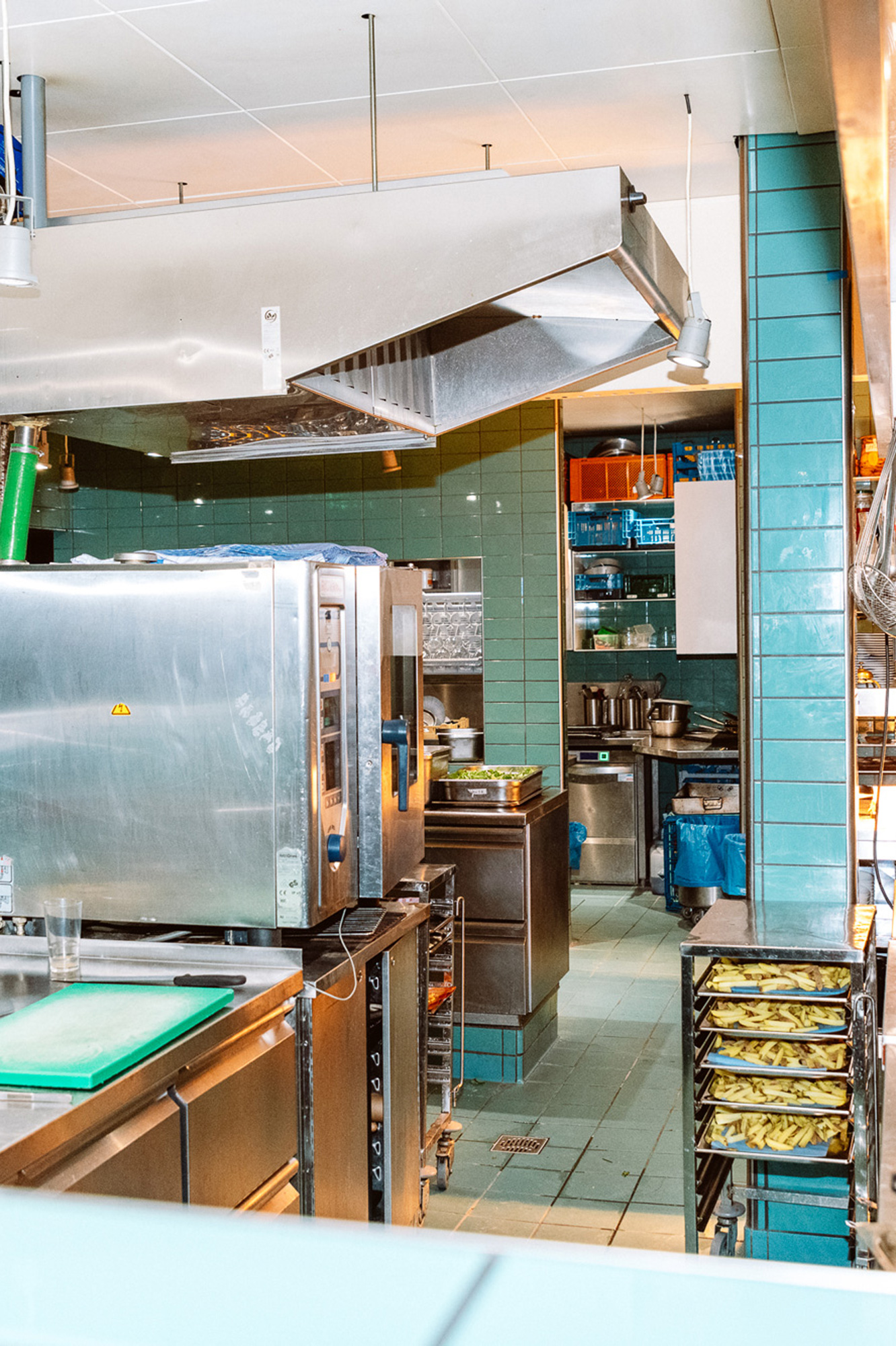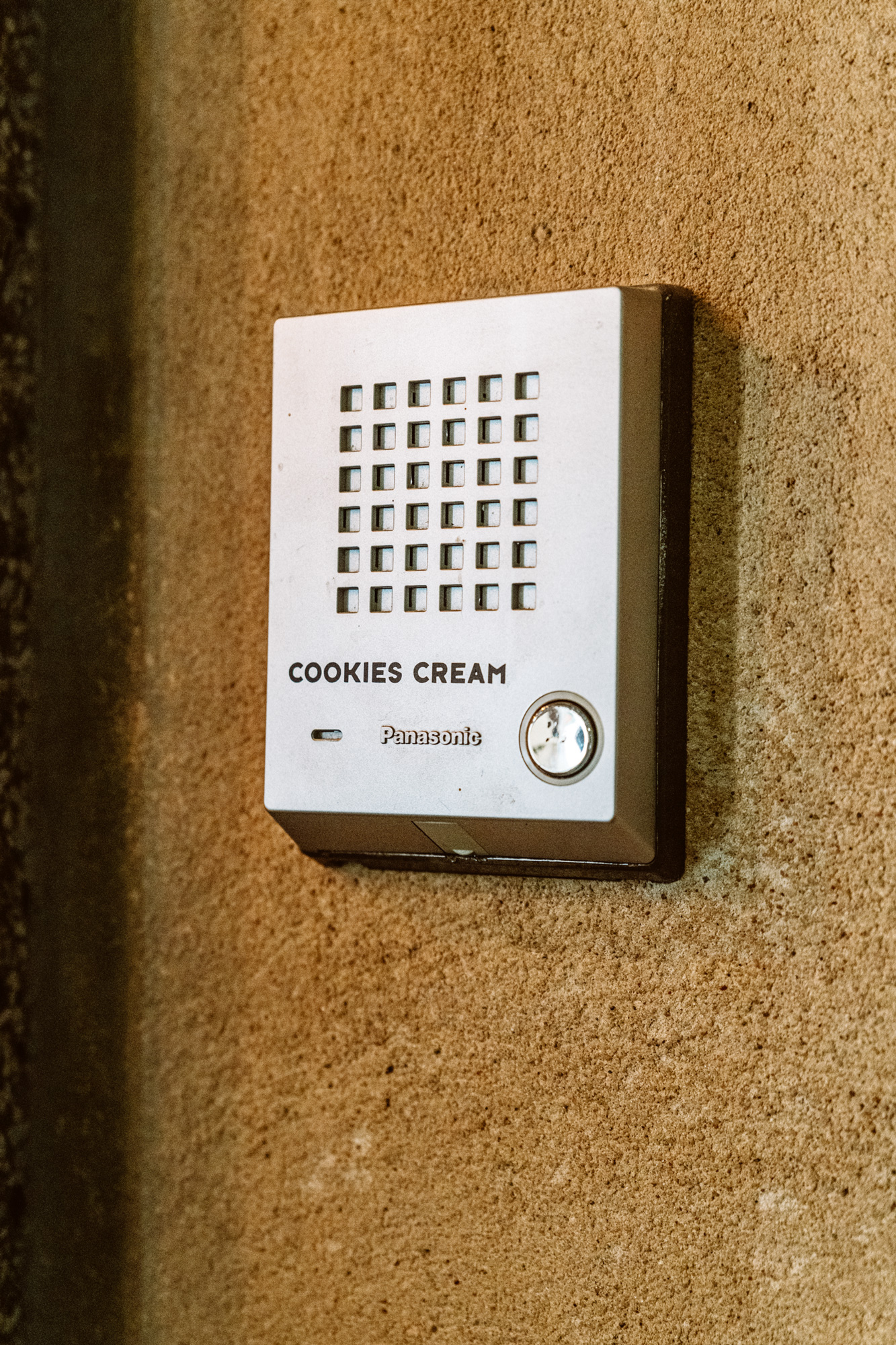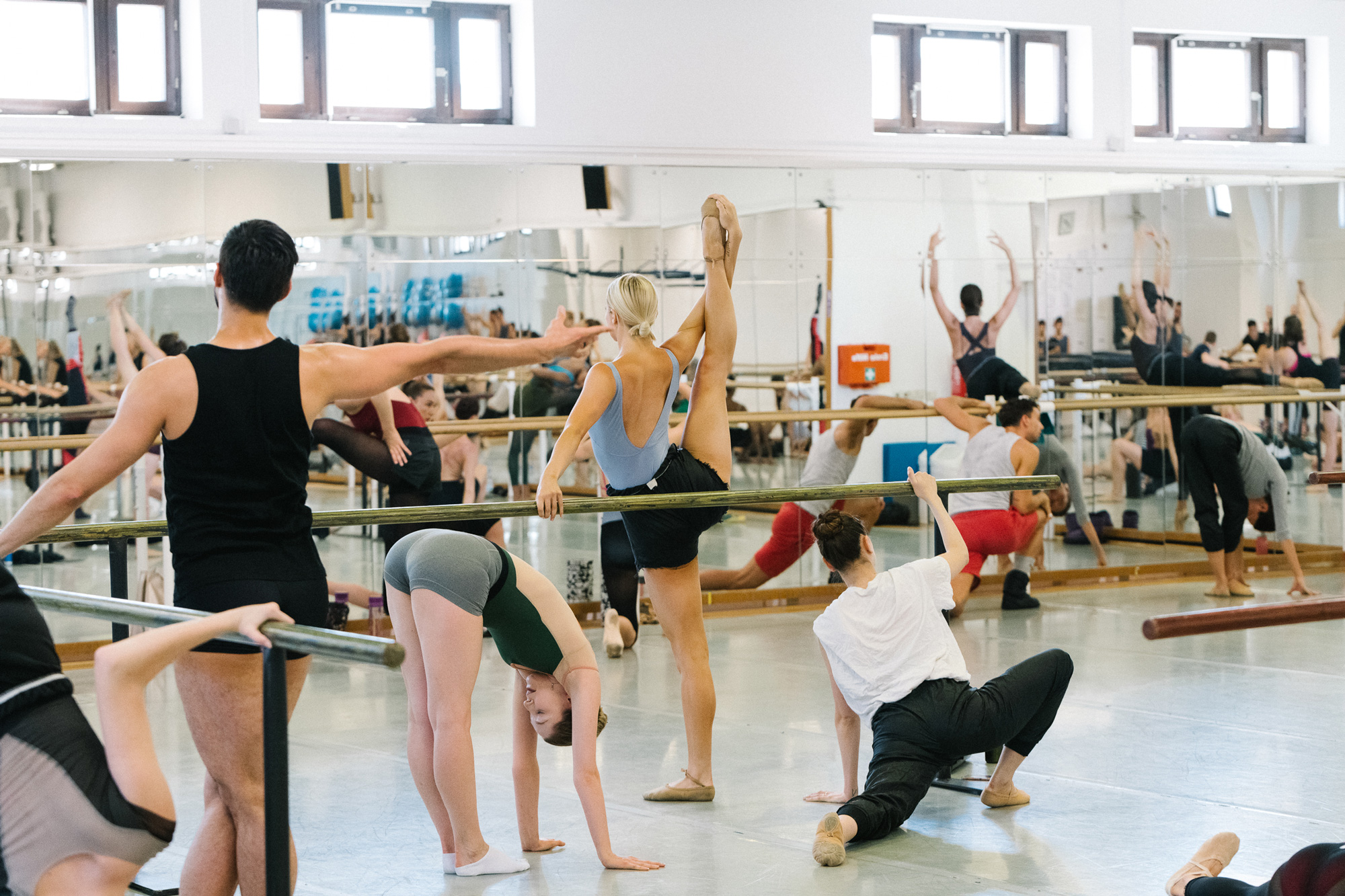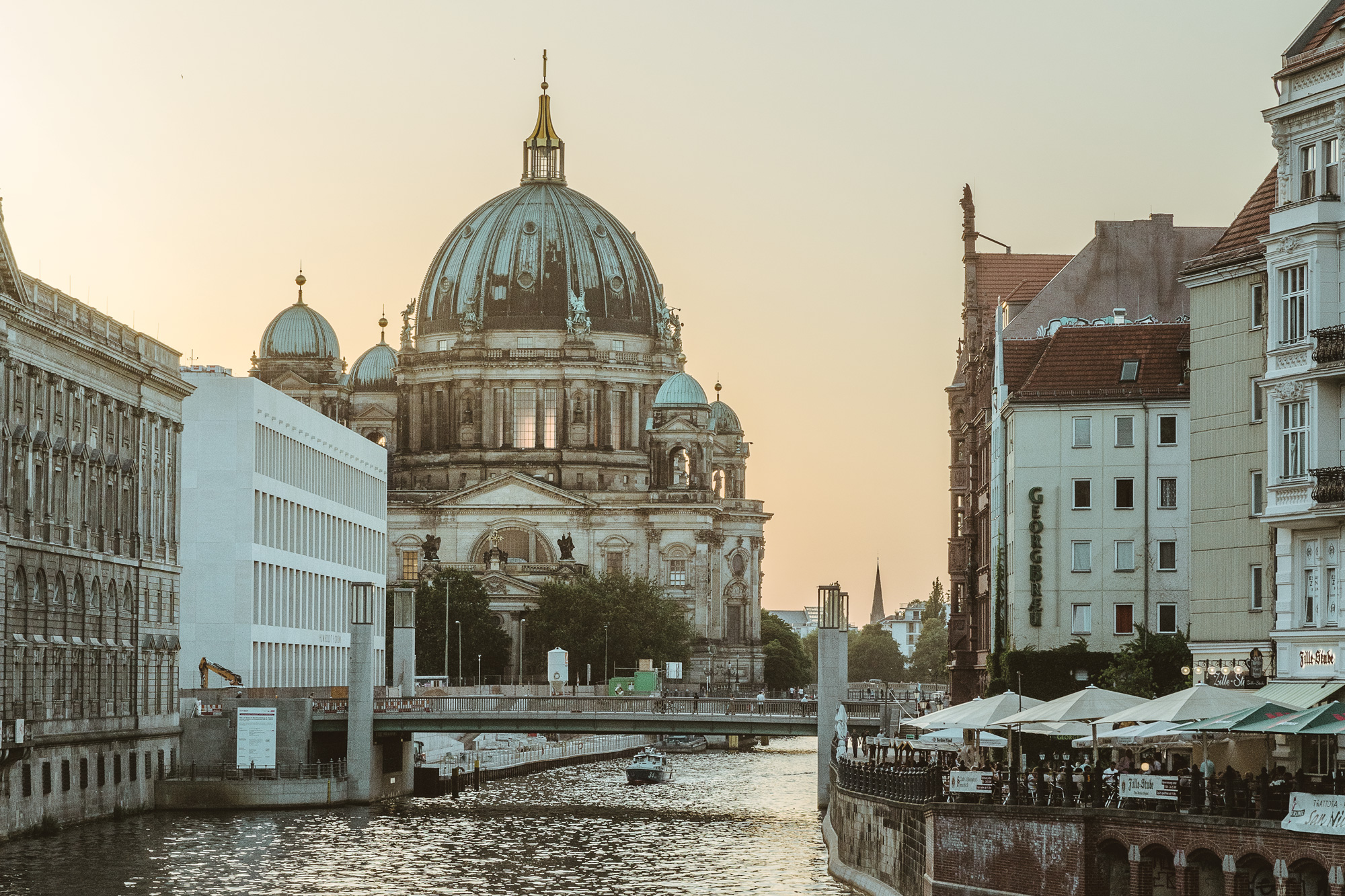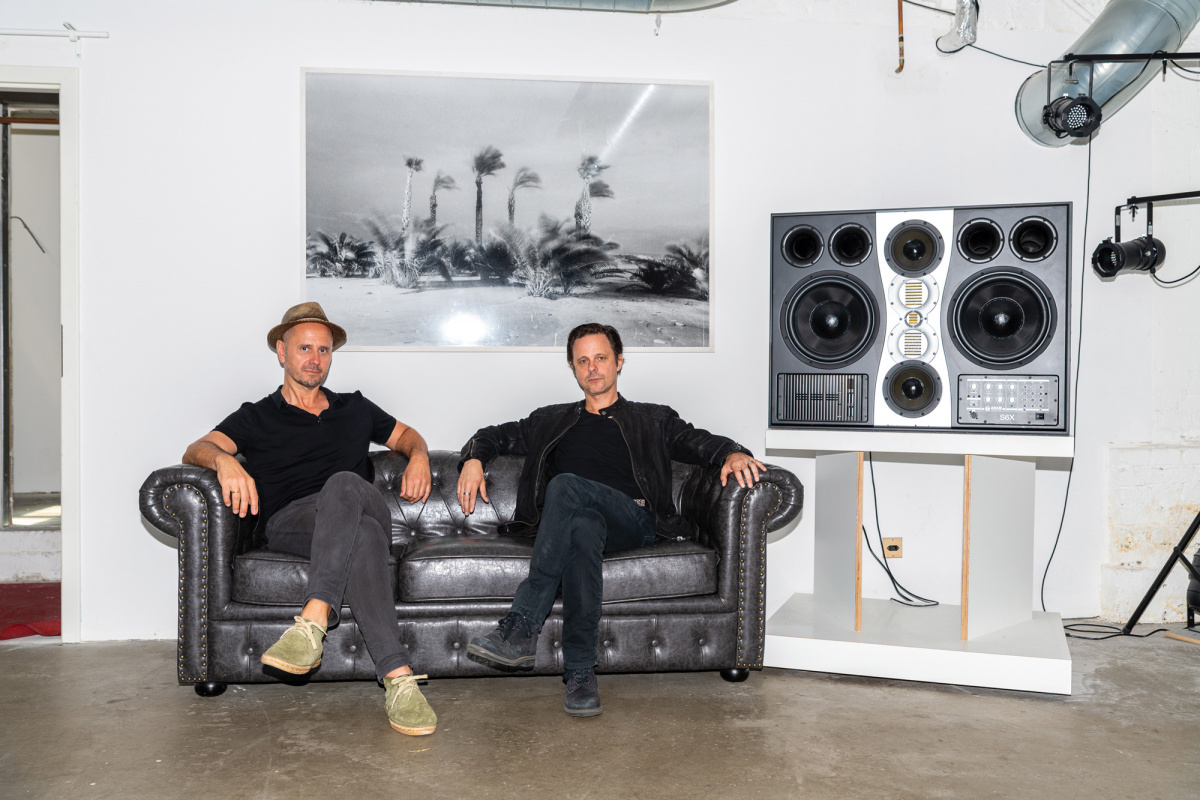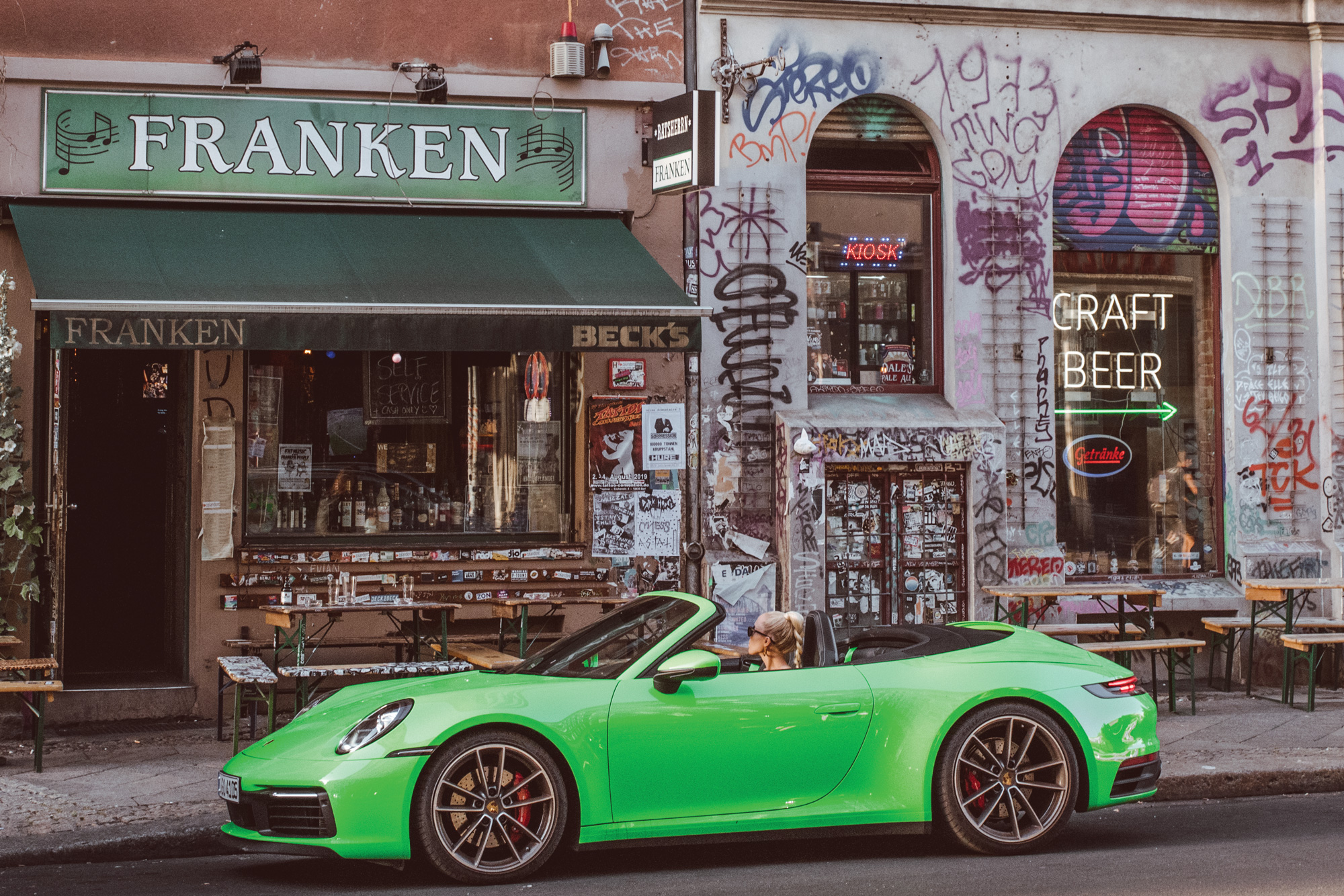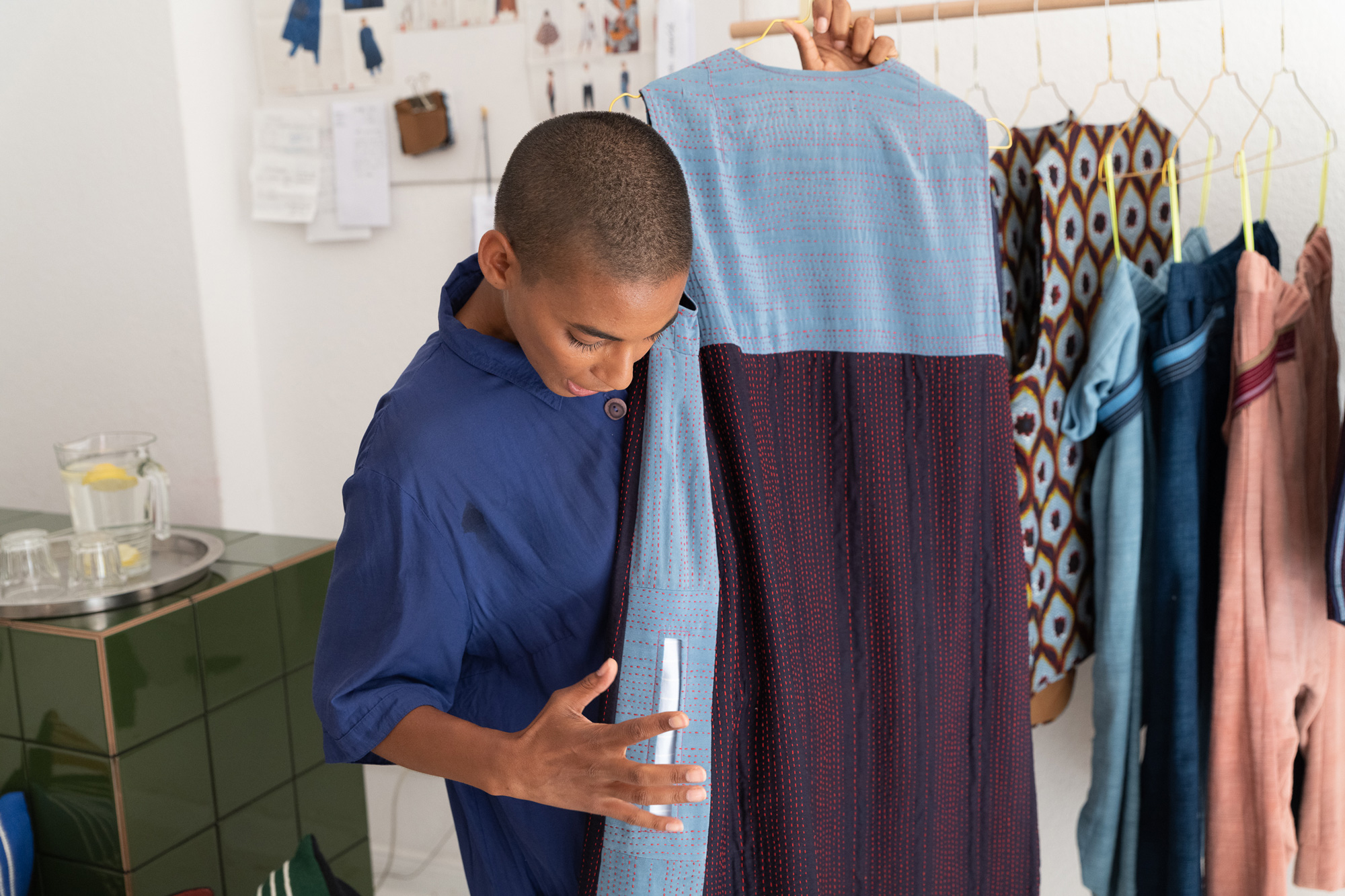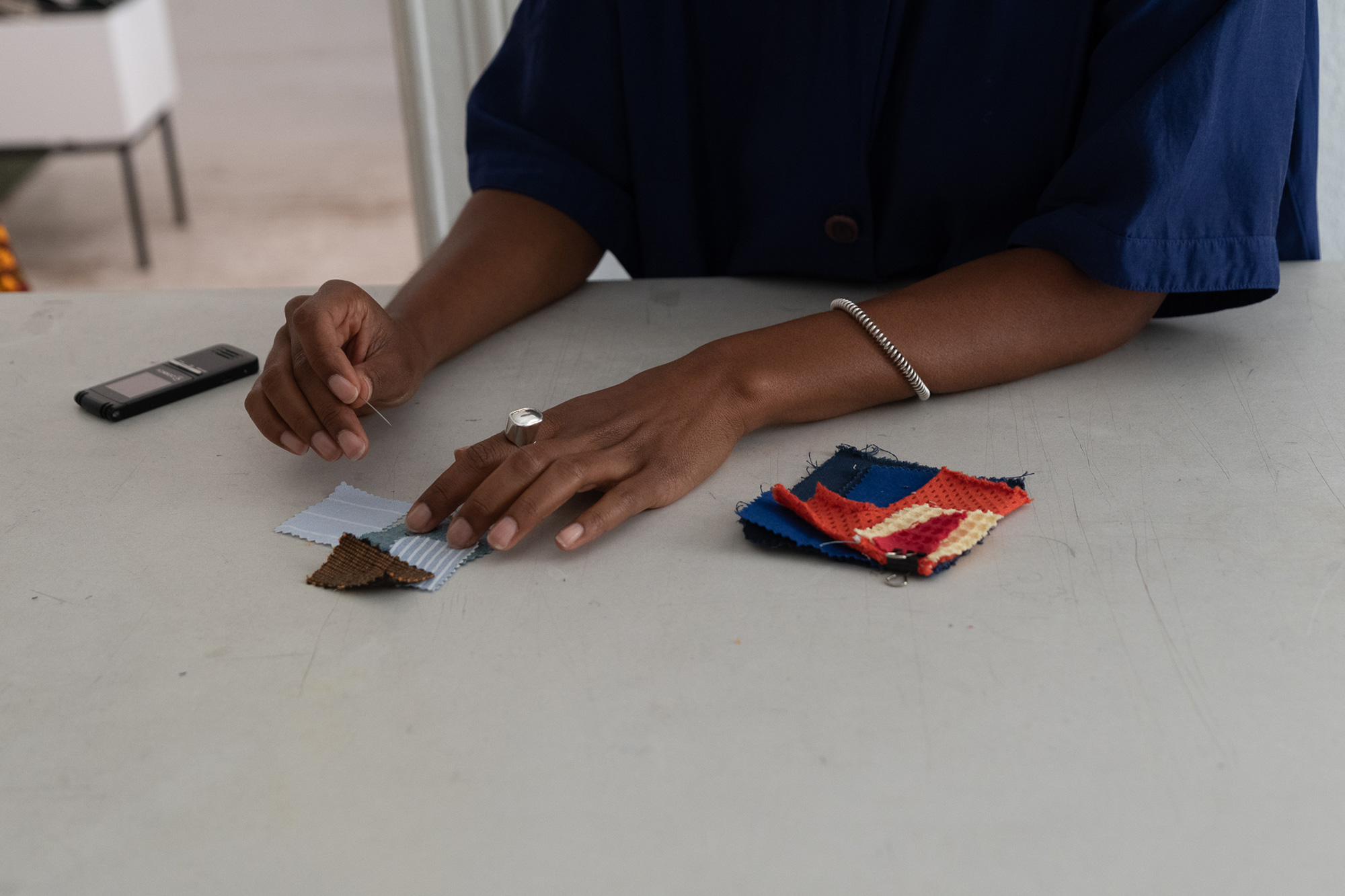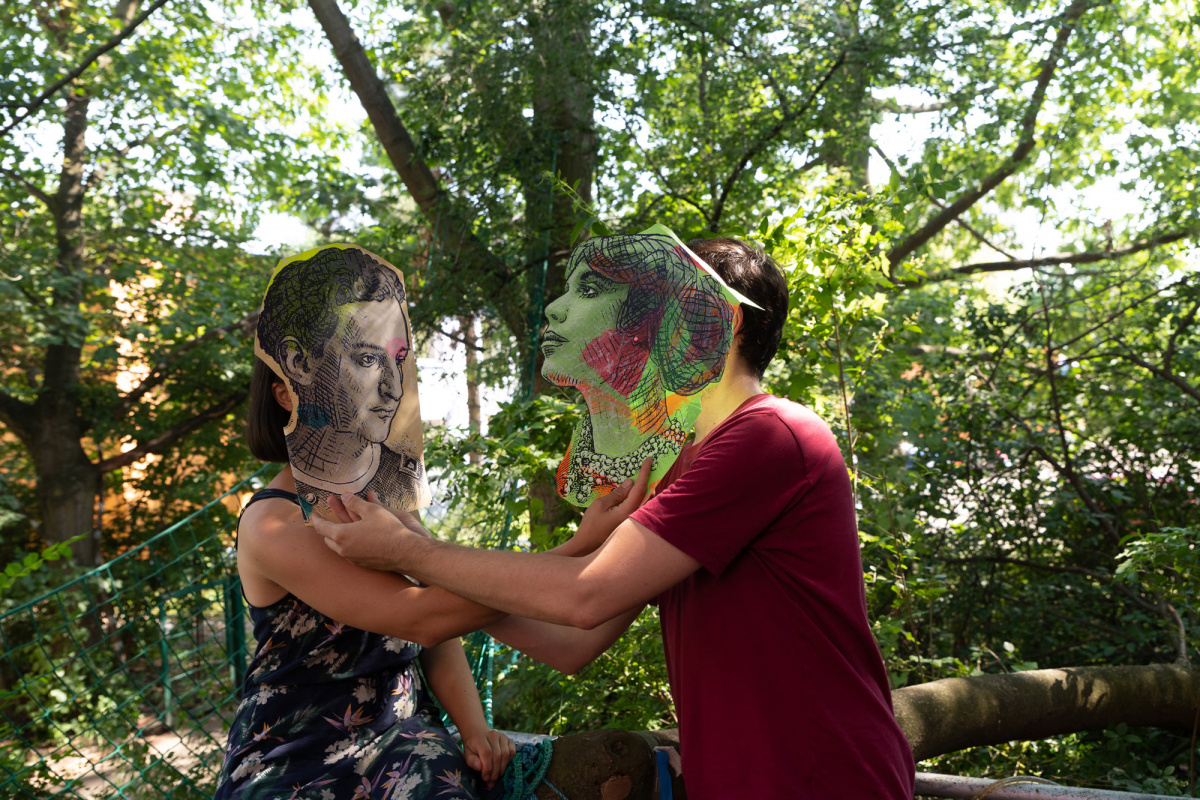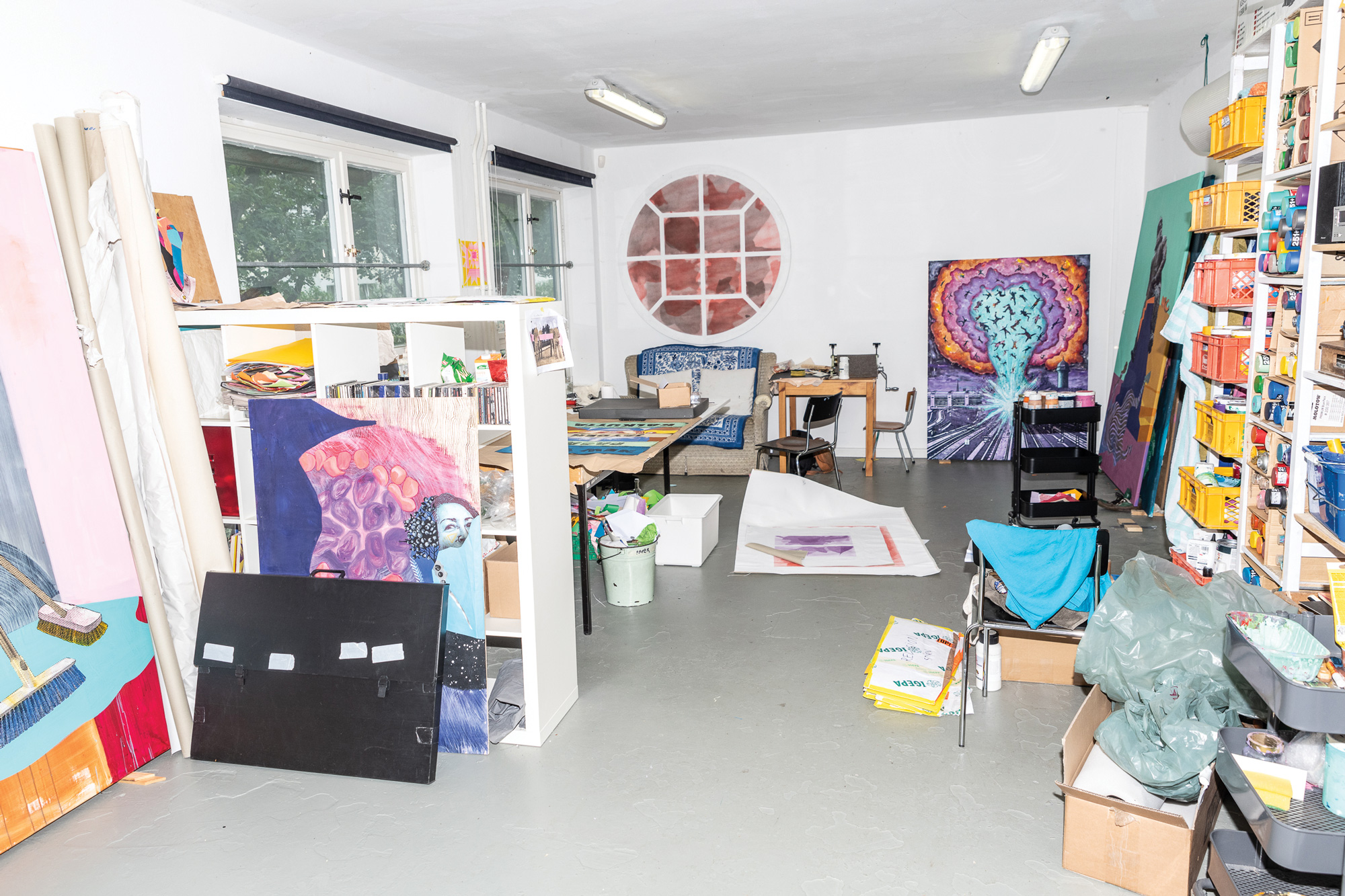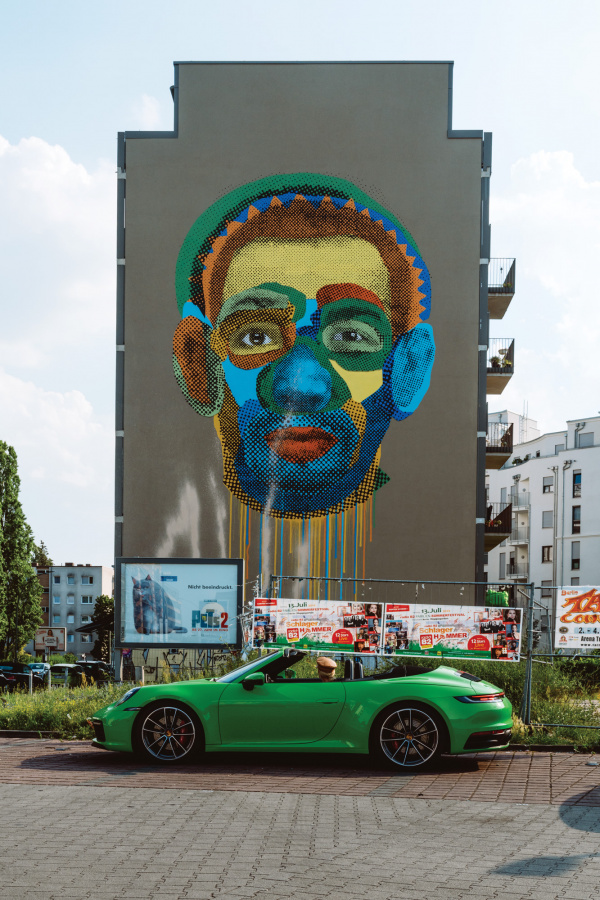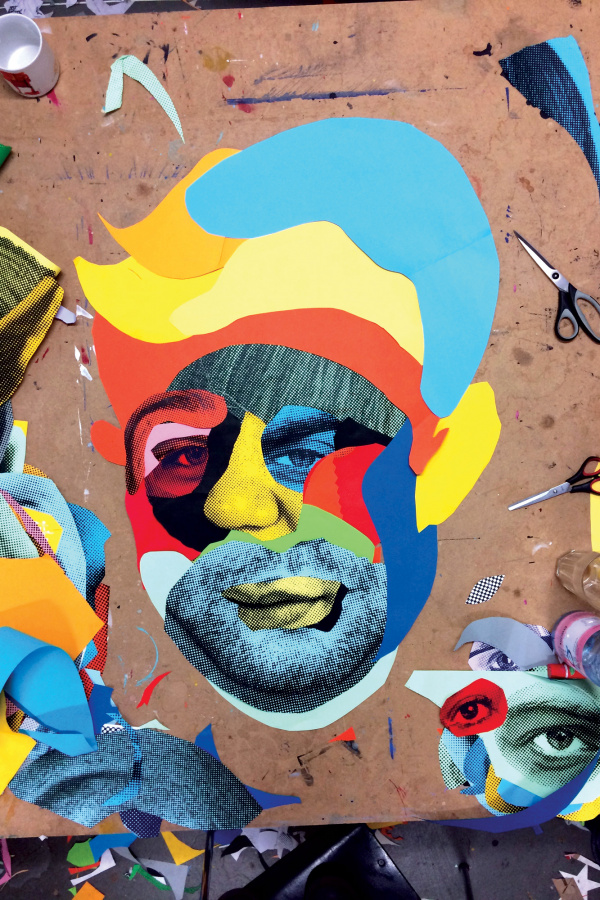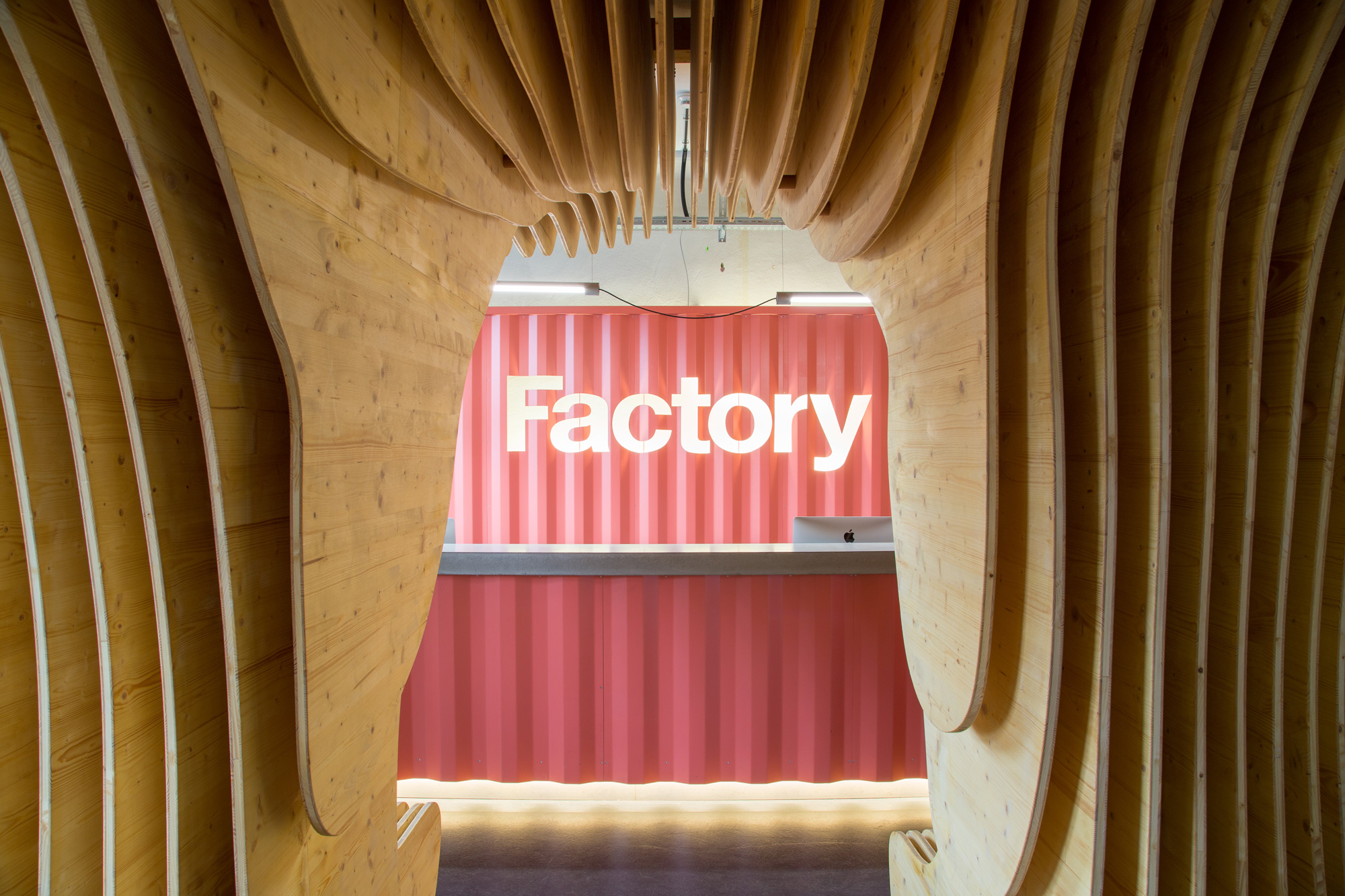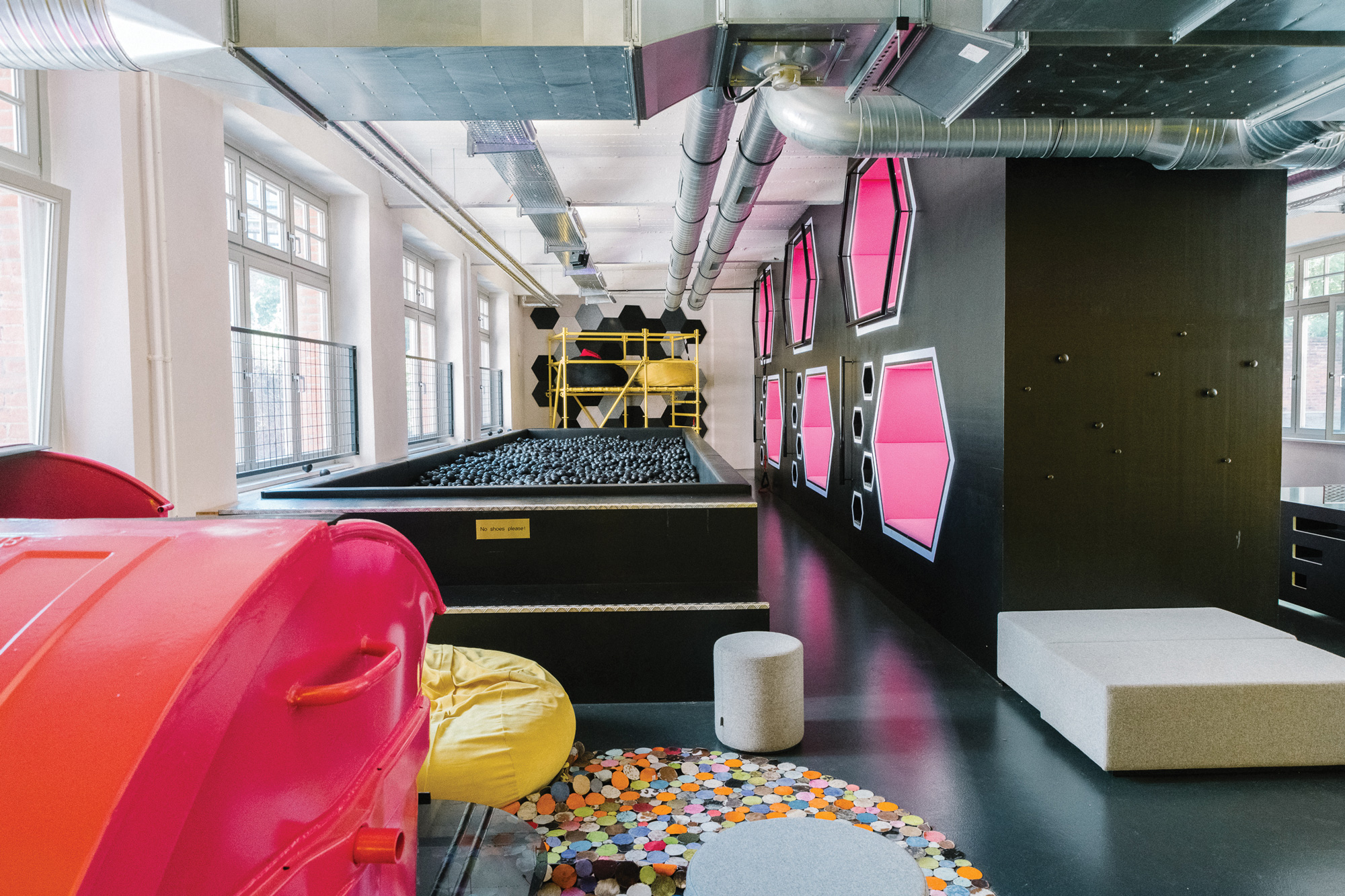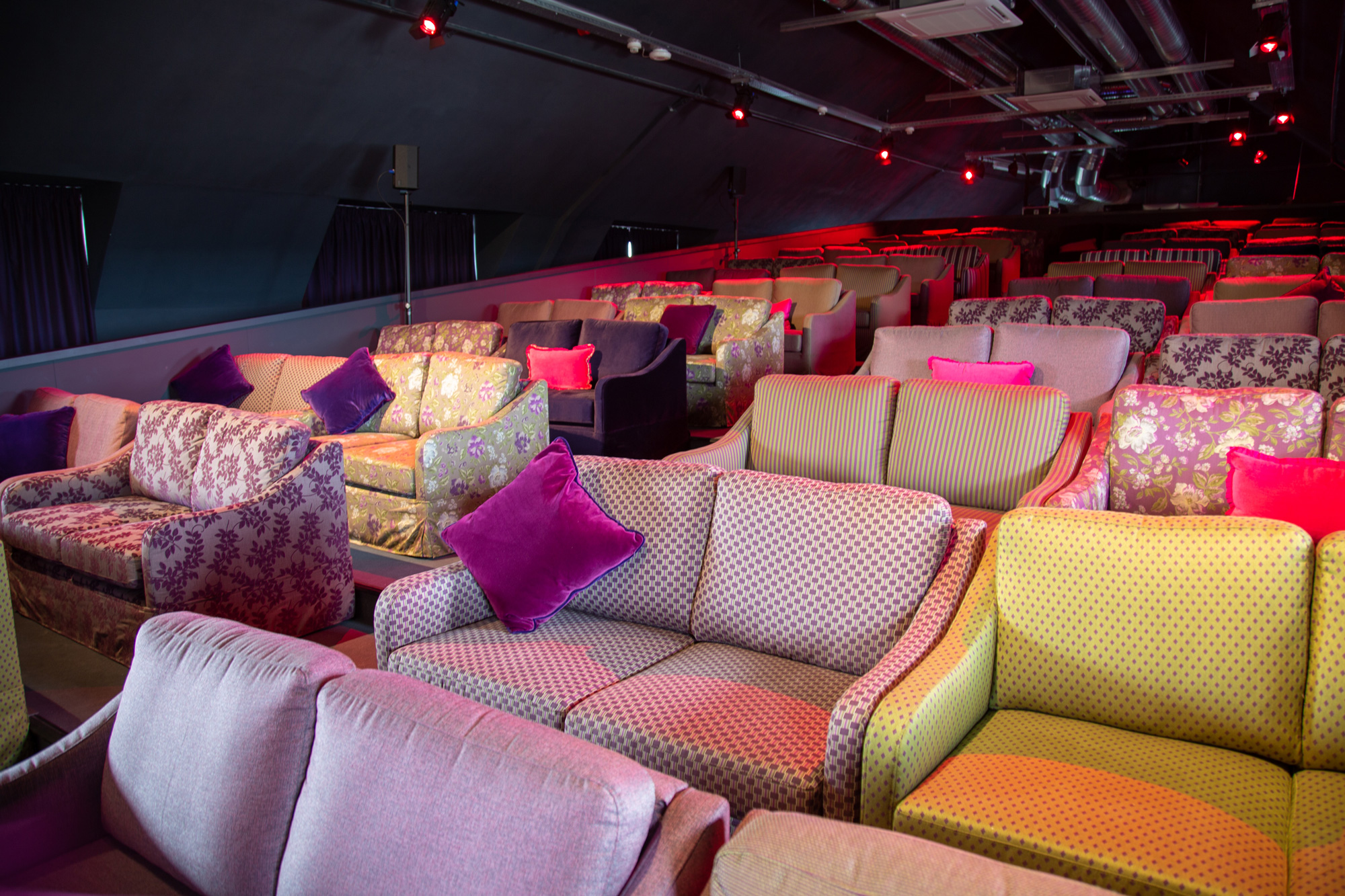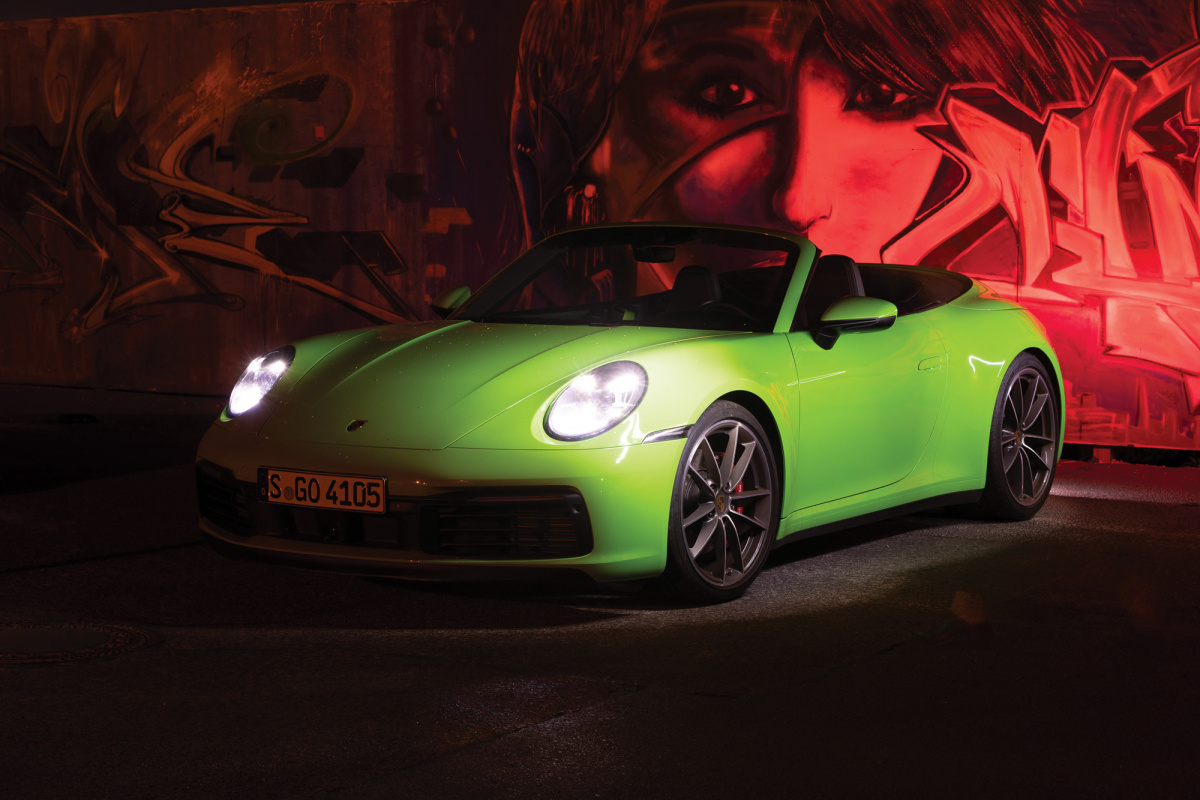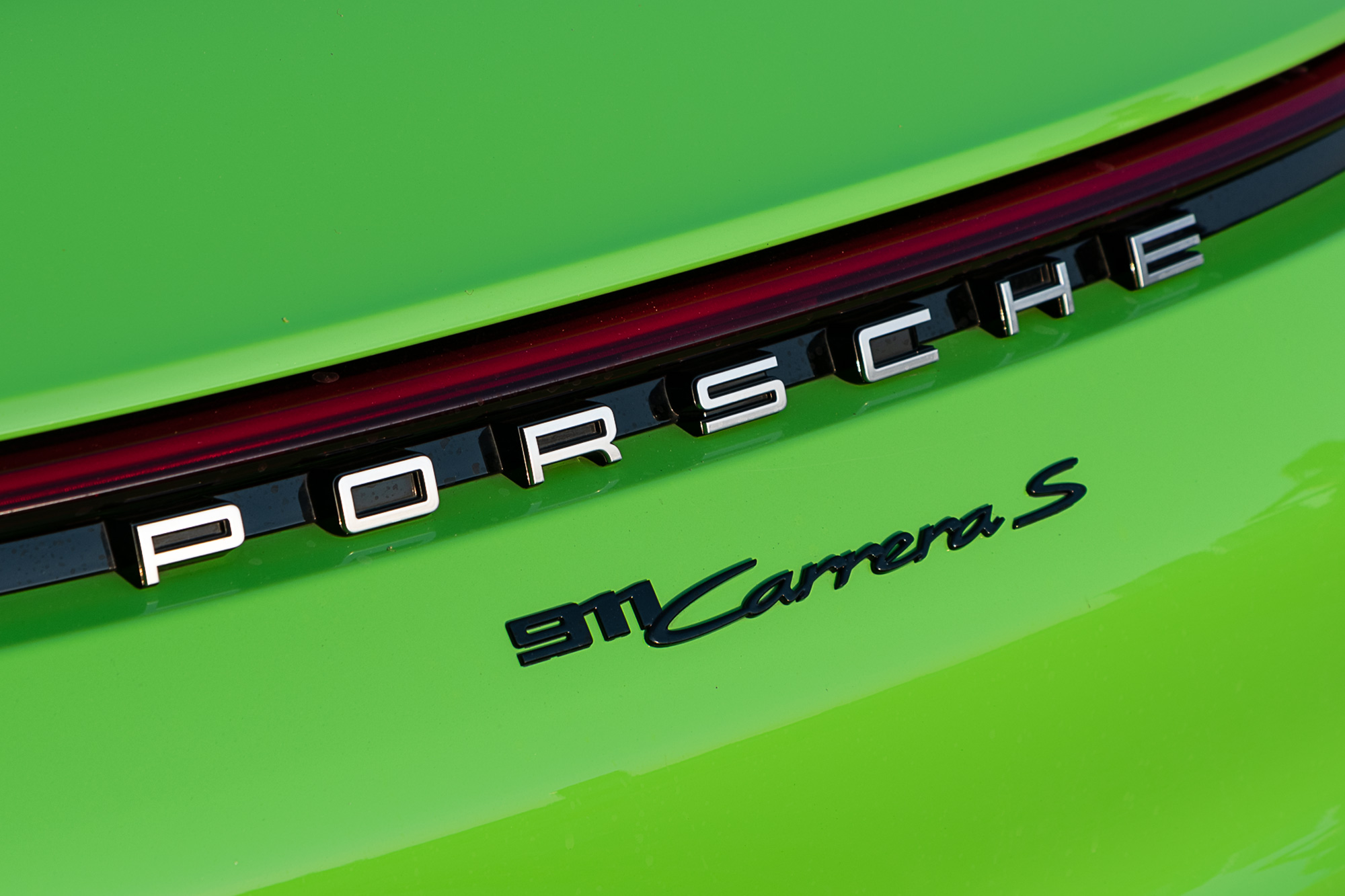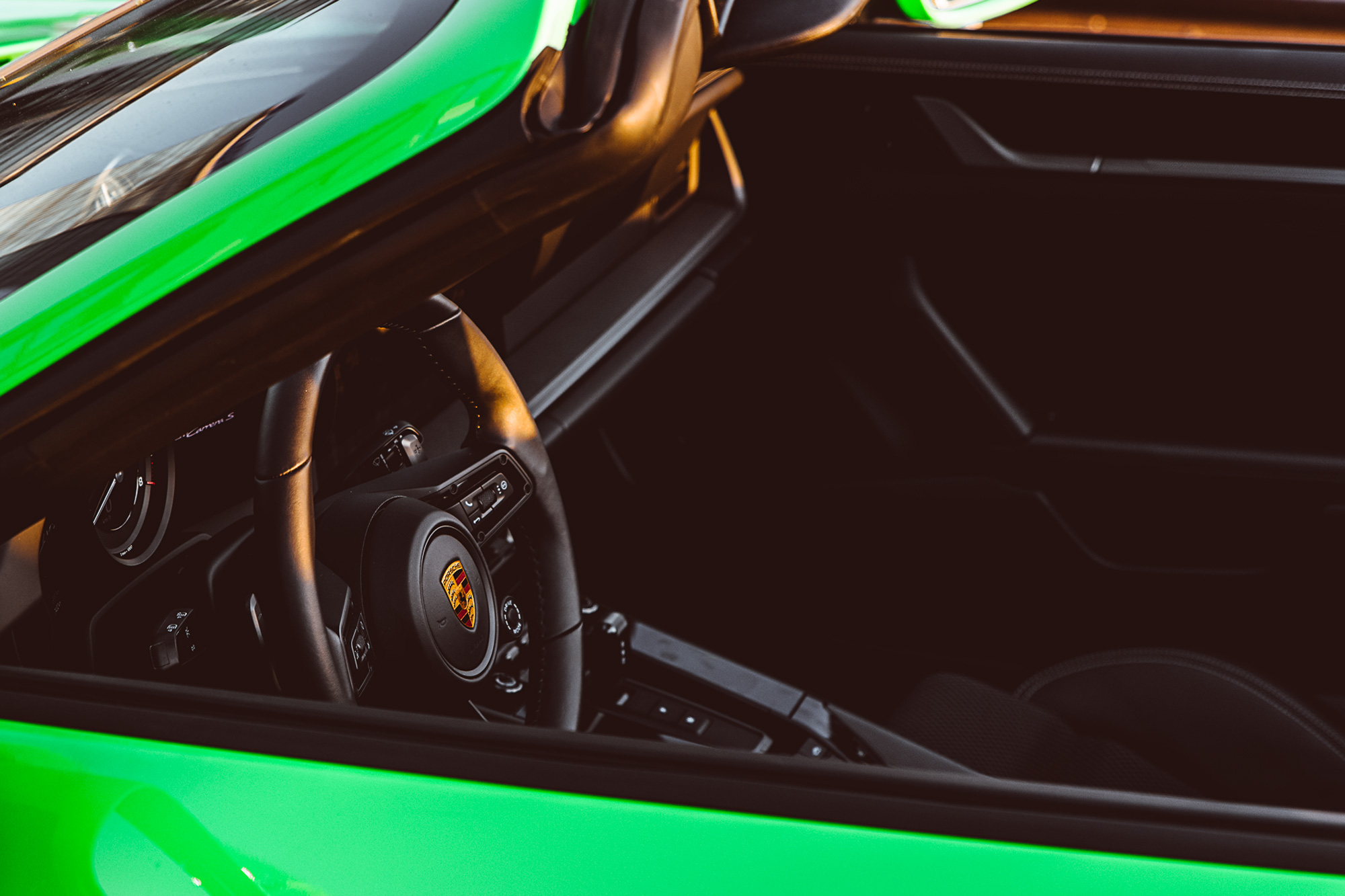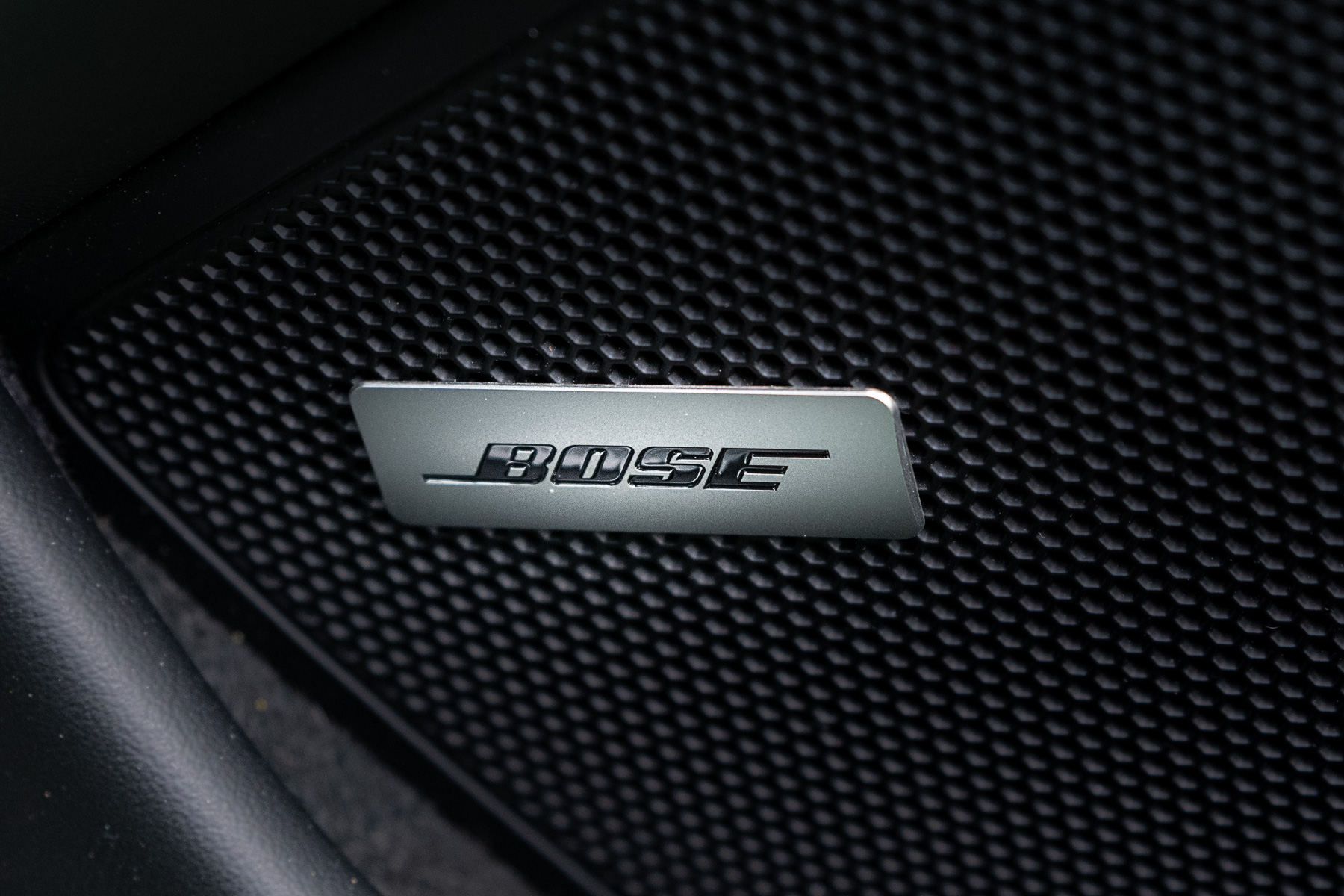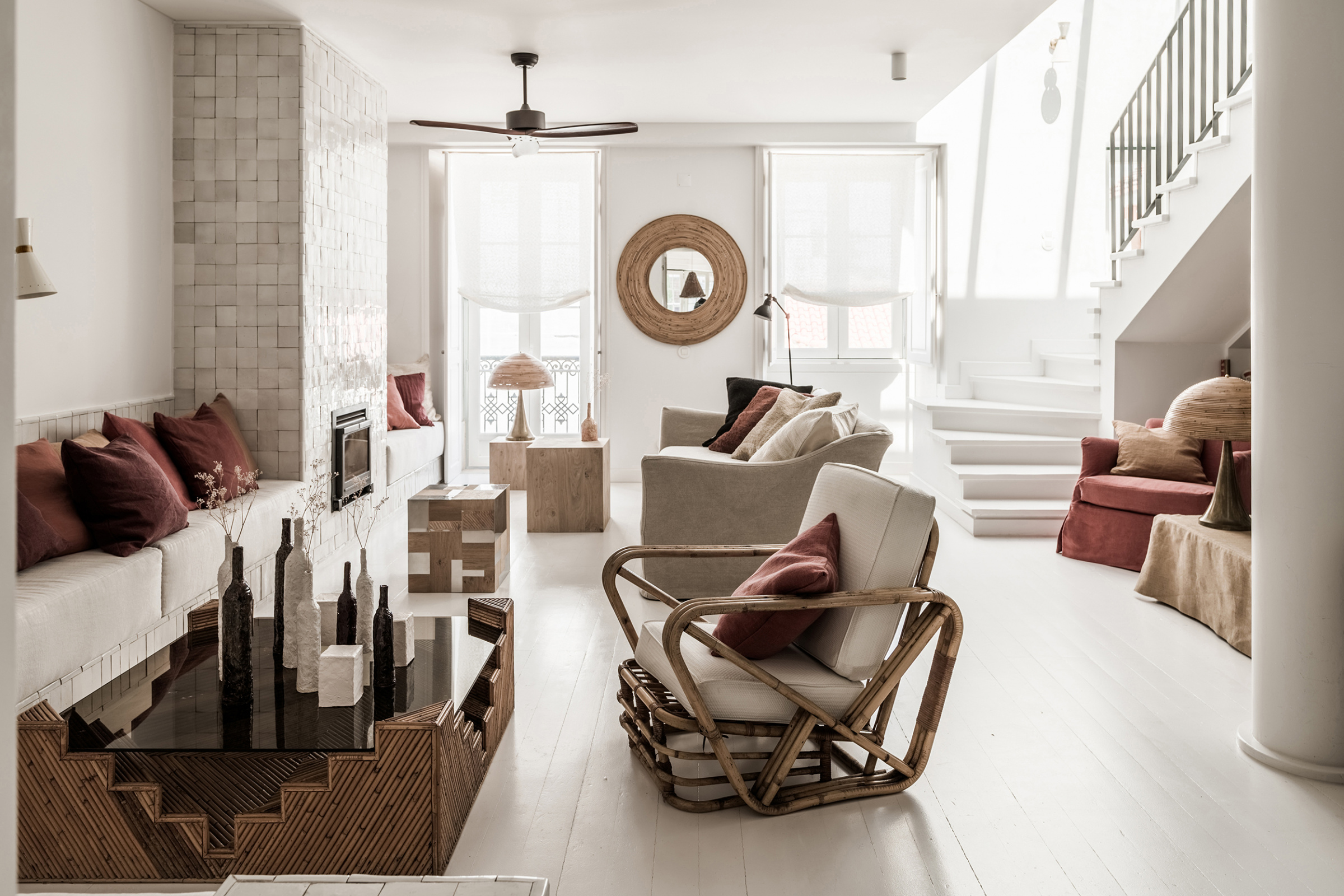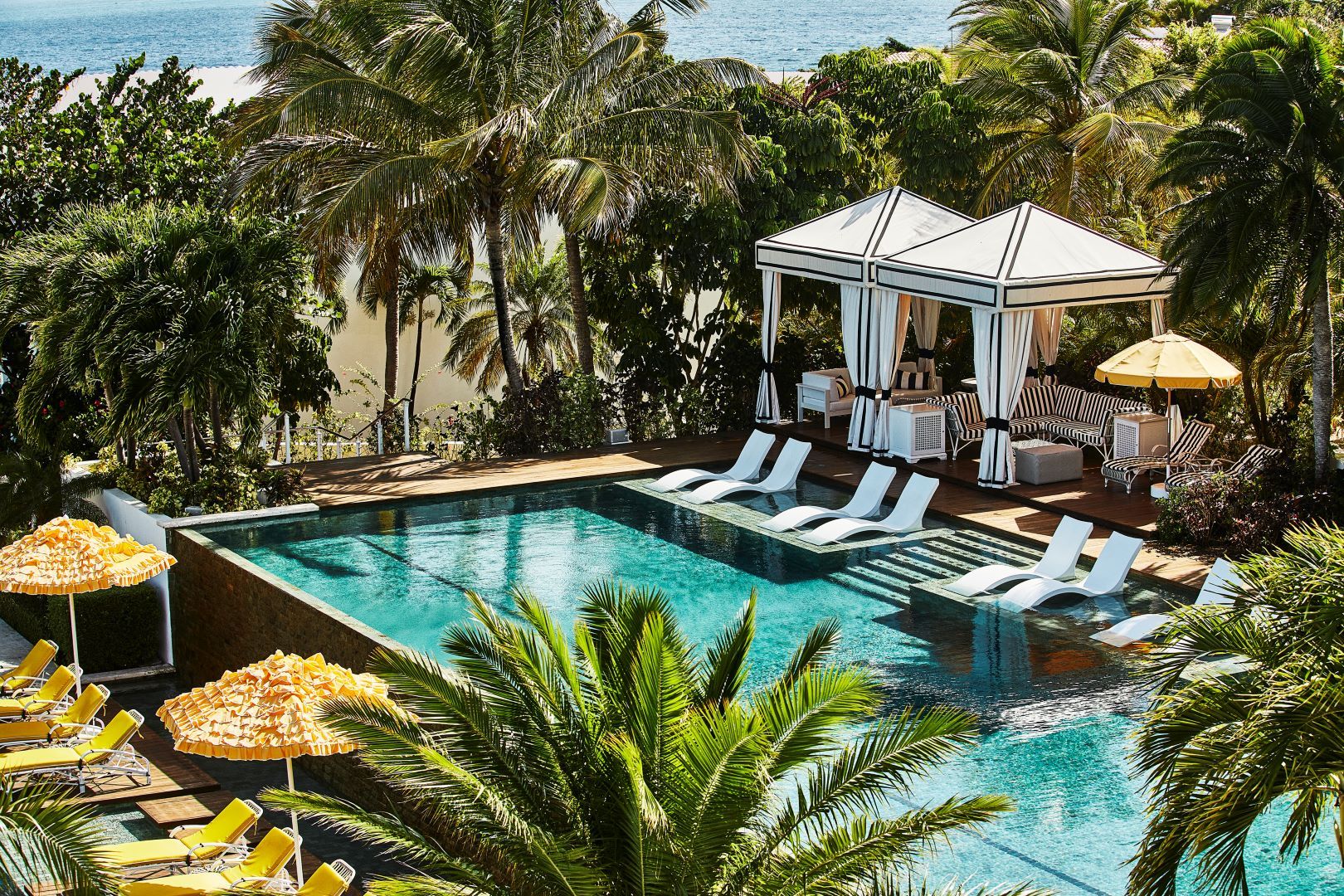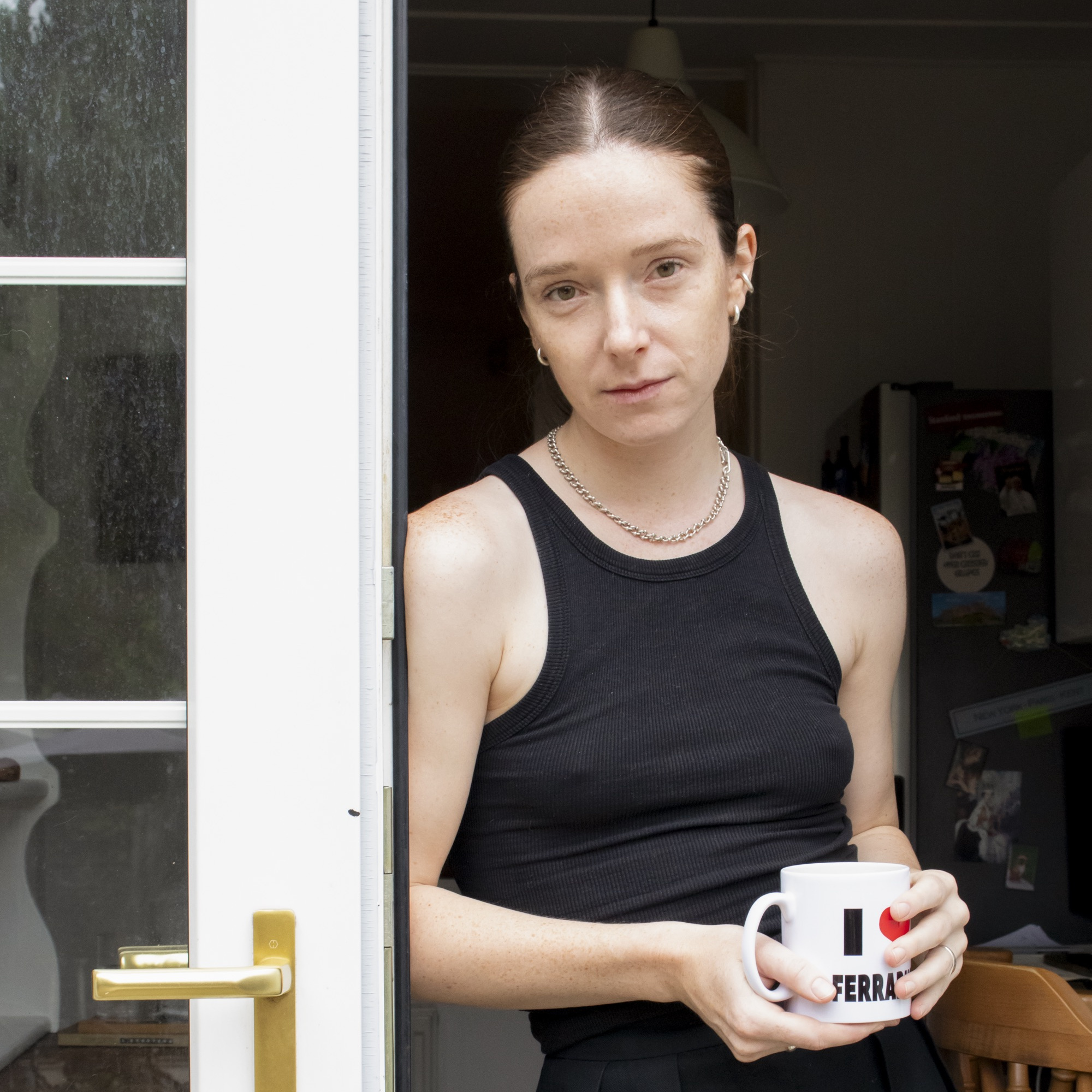Somehow Berlin escaped us. Sitting patiently at the top of our to-visit list, it seemed to always slide further down the calendar. Despite countless friends, colleagues, and music, design, and culture fans raving about trips there, be it for vacation or work, we just never made it. It was time to go and explore the creative culture of Berlin.
We had to know: Just what is it like living, working, and collaborating in Berlin? We had one week—how could we begin to understand the entire creative community in such a short time? There was a lot of ground to cover and, never ones to shy away from a challenge or a thrill, we wanted to take our exploration to the next level. It turns out, when you ask the world for a stylish German thrill, you get one thing back—a Lizard Green Porsche 911 equipped with a premium Bose surround sound system. Subtle it’s not, but an adrenaline rush it is. Our travel would now be powered by 555 watts of fully active sound and 379 horses under the hood. We packed our bags, and our driving shoes, and headed to Berlin.
The trip began downtown, in the center of Berlin known as Mitte. We checked into Hotel Zoo, created with a 1920s glam vibe courtesy of interior designer Dayna Lee. Dinner was had nearby at the Michelin star, all vegetarian, Cookies Cream, followed by a show at Friedrichstadt-Palast. From there we moved into Kreuzberg, Berlin’s music culture home, and checked into Orania.Berlin, an intimate hotel impeccably designed for comfort, great food, and live music. Just down the street we popped into SO36, Berlin’s version of the iconic NYC rock and roll club CBGB, and, fittingly, stumbled upon NYC hardcore legends Sick of It All playing. Traveling back across town we made a final stop into Hotel Provocateur, a burlesque-themed hotel trimmed in red velvet with claw foot bathtubs and one of the best breakfasts in Berlin.
As we ripped around Berlin, often with the top down and stereo blasting, we met with a cross section of the city’s most creative residents, from ballerinas and street artists to musicians and entrepreneurs. Relive our journey as we discovered one of Europe’s most vibrant cities, all set against the balanced soundtrack of our favorite playlist and a twin-turbo six-cylinder engine.
- We explored Berlin in a Lizard Green Porsche 911 equipped with a premium Bose surround sound system. Photo by Chris Force
- The Orania.Berlin is an intimate hotel impeccably designed for comfort with great food and live music. Photo by Chris Force
- Open 24 hours a day, 365 days a year, what remains of the Berlin Wall is now the longest open-air gallery in the world and one of the city’s most popular tourist attractions with more than 3 million visitors each year. It’s free to check out on your own or book a guided tour for €3.50. Photo by Chris Force
- You’ll find more than 100 large-format paintings that symbolize the happiness around the fall of the Berlin Wall. Since 1996 a group of artists has been committed to the preservation and care of the paintings as part of the East Side Gallery Artist Initiative. Photo by Chris Force
Club & Restaurant Owner
Heinz “Cookie” Gindullis
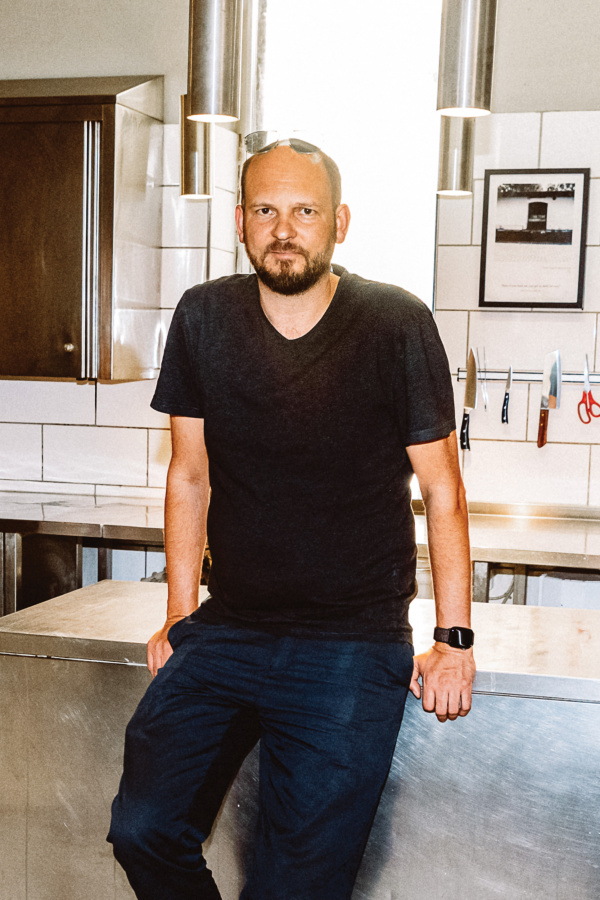
Heinz “Cookie” Gindullis. Photo by Chris Force
Mitte, German for “middle,” lies in Berlin’s center. It’s the ritzy downtown you might expect of any big European city, replete with museums, cathedrals, and luxury shopping. It once housed a famous Berlin Wall crossing point called Checkpoint Charlie, now a major tourist attraction. Major hotels dot the neighborhood, and many, like the Westin Grand, were rebuilt postwar in the 1980s with design nods to the lot’s previous inhabitants. Wander around the Westin Grand and you’ll notice remnants of the original Berlin wall, which, for a small fee, you can chisel away at to create your own souvenir. If that sounds a bit dull, keep walking—through the alley, past the bicycle parking, and past the trash bins. Keep an eye out for a small plastic toy Michelin Man strapped above a door, then ring the bell.
If you’re lucky you’ll be greeted by Heinz “Cookie” Gindullis, who will introduce you to not one but two hidden restaurants inside—Crackers and Cookies Cream (the latter of which has a Michelin star, hence the subtle brag with the toy). Cookie, a nickname his little sister gave him as a child, is German but London-raised. “Growing up, you want to get away from your parents. When I arrived in Berlin it was a very free space. There were a lot of creative people and there was no money in the city. You could live here on very little money in 1992. If you worked as a barman twice a week that’s all you needed.”
- Walking into Crackers is full of surprises, from the hidden entrance to walking right into the restaurant’s kitchen. Many patrons are confused at first, but not to worry—the main room is tucked away just beyond the kitchen. Photo by Chris Force
- The doorbell to Cookies Cream. Photo by Chris Force
Cookie started as a dishwasher in what was a very different Mitte back then. “Mitte used to be East Germany. When the wall fell, no big investors were putting money in the area. In a way, it went back to feeling like right after the Second World War. The properties had all been owned by the state, but after the wall came down, the idea was to try to give the property back to its original owners. Mitte was full of empty spaces not being used, and you couldn’t get in contact with any owners. If you were lucky you found an empty space, broke down the door, built a gallery or a bar, or lived there until the next day, month, or sometimes year someone would tell you to move out. That’s how I started my first bar.”
People made bars and called them Monday bar or Tuesday bar or Wednesday bar. And neighbors couldn’t really complain about the noise—there was no one to call. “I started my first bar in the cellar of where I lived in Mitte. I was there for a year-and-a-half before they decided to renovate it.” So he moved it to a new place, and ultimately moved seven times before all was said and done. The name? Locals referred to it simply as Cookie’s, which he ran for nearly 20 years before creating his own full-service restaurant.
Cookie has been vegetarian since the age of 8, so he’s long wanted to make a vegetarian restaurant, something rare at the time in Berlin. “It was a very difficult thing. I didn’t know how the journey was going to be. I was very lucky to meet my head chef Stephan Hentschel 11 years ago. For the first year-and-a-half the restaurant just didn’t work, and I thought we had to totally change the concept. But Stephan thought I was crazy. ‘We have to work at least another year-and-a-half first,’ he told me. That was the most important turning point—we didn’t give up too early. I would have never got this machine started. It would have never taken off like it’s taking off now.”
Taking off might be an understatement. Cookies Cream is one of the few vegetarian Michelin star restaurants in the world. Cookie also runs Crackers, the restaurant that replaced his famous cellar club and, Data Kitchen, a slow food partnership with tech giant SAP. He connects his success with staying focused and staying in Berlin. “Berlin was so cheap 20 years ago. It was easygoing. If I had stayed in London I would have had to take a big loan out. Here it was easier to try things out, if it didn’t work out, it didn’t work out. The good thing about Berlin is the people are very loyal. I think things change faster in other cities like London or New York. Berlin is my favorite city.”
But he sees how the city is changing, too. “Berlin used to be about wearing a T-shirt and jeans. Clothing wasn’t important—ideas were. Now I look at how stylish young people are; I don’t know they do it.” His priorities are also changing, as working 15 hours a day seven days a week becomes harder to maintain when you have kids. “My priority now is to spend time with my kids while they are young. That means not taking on extra jobs or new locations. It also means taking extra care of the stuff I already have.” Although, he does have another dream. “A big hotel. That’s been my dream for the last 15 years.”
Ballerina
Arielle Martin
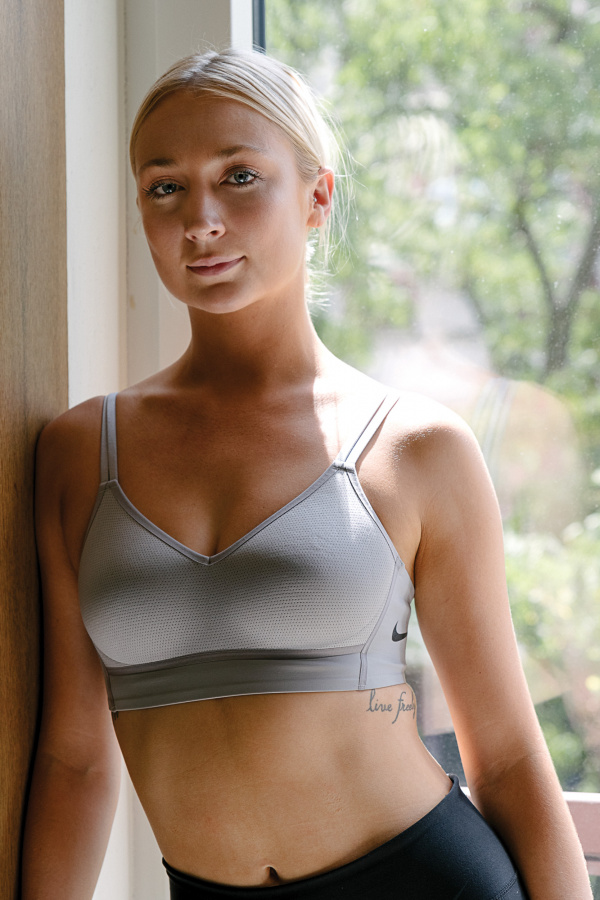
Arielle Martin. Photo by Chris Force
The history of the Friedrichstadt-Palast theater goes back to 1867. Its current iteration, opened in 1984, houses the world’s largest stage, nearly 31,000 square feet. A 79-foot arch, Europe’s widest, stretches above 1,895 seats. The stage is currently dressed for Vivid Grand Show with inventive sets, unbelievable costumes, and direction from Krista Monson, former Cirque du Soleil artistic director.
- Rehearsal at Friedrichstadt-Palast Berlin. Photo by Chris Force
Five stories above the glitz and lights I met Arielle Martin. The Florida native began dancing at 2 years old, and at 10 asked to be home-schooled so she could study dance full-time—a bold move for a 10-year-old. “I moved here five years ago when I was 19. As a dancer you move where the jobs are, but Berlin has stuck with me. When I landed at Tegel Airport I automatically felt calm,” she says. At 15 Arielle moved to Seattle to join the prestigious Pacific Northwest Ballet, and she’s spent time living and working all across the globe, but she now considers Berlin home. “My work, my friends, my family, my heart is here. In Berlin, when you’re out at bars, no one just sits in their little area; there’s so much mingling, and you can make so many friends. It’s also a city of parks. Everyone grabs a bottle of wine, some food, and hangs outside for hours. No one in Florida would ever do that.”
- Drinking and dining al fresco while overlooking the Spree will always be popular, even amid a flurry of activity as modern buildings go up around historic sites like the Berlin Cathedral Church, located near Friedrichstadt-Palast. Photo by Chris Force
Musicians
Walter Merziger and Arno Kammermeier of Booka Shade
- Walter Merziger and Arno Kammermeier. Photo by Chris Force
The bank of the River Spree, just west of the famous Oberbaum Bridge, was once a largely abandoned set of brick warehouses and buildings, its underbelly riddled with a wild network of unlicensed nightclubs and bars. “Berlin was a special place because it was an island of outsiders within a country. It was the New York City of Germany, and it became a lagoon for electronic music. Someone was sitting on a couch one night and just took a chunk of metal and banged on it for two hours and said, ‘That’s music.’ They wanted to be different,” says Walter Merziger, of the German house duo Booka Shade.
Residue of the desire to do things differently can still be found in the neighborhood, now referred to as Mediaspree, in places like Riverside Studios, an artist collective built across the river from the shiny Mercedes-Benz Arena and luxury high-rises, where Arno, the other half of Booka Shade, holds a studio. “This was a vast area with lots of empty spaces, which was great for creativity, especially for music. All the techno raves happened in abandoned places. But when there’s subculture, sooner or later, everything else comes in, everybody wants to take a share of the cultural energy,” Arno says.
- The Franken is a punk rock drinker’s dream across from the iconic SO36 music venue, known for its frequent appearances by Iggy Pop and David Bowie in the ’70s. Photo by Chris Force
Walter and Arno began making music together in Frankfurt in 1984. As the duo gave me a tour of the Riverside Studio building, I asked how they ended up in Berlin in the first place. “Love issues. I had to leave Frankfurt because of a girlfriend. I was half hiding and half leaving. Everybody was moving to Berlin, and I realized it was the hot spot to be. So I moved first and started building a little studio here in my living room. I could see something was really happening here. Arno and his family moved here a year later,” Walter says. Although the duo’s roots are in Frankfurt, Berlin is where they grew. Shortly after relocating they founded Get Physical Music, a record label that quickly dominated the international club scene and became a bestseller at Beatport, the world’s largest dance-related digital music store.
Today Booka Shade continues to perform and produce music all over the world. I had to ask: “What’s the secret to maintaining a creative partnership for 35 years?” “Leave your own ego out of the room,” Walter told me. “We step back and don’t push our own ideas all the time. Plus, it’s really fun to have a great partner in your life.”
Fashion Designer
Buki Akomolafe
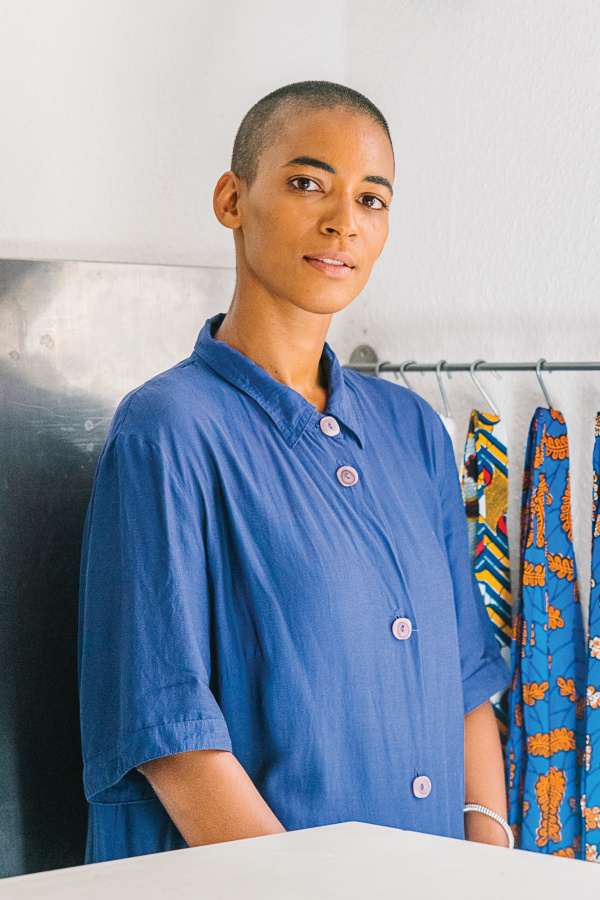
Buki Akomolafe. Photo by Chris Force
Bergmannkiez is a small neighborhood in western Kreuzberg. It’s quiet, affluent, and creative. Cafes, boutiques, and pastel colored homes with wrought iron balconies line the cobblestone streets. A short stroll from the Passion Church, you’ll find a light yellow building with a storefront showroom where neatly organized handmade clothing in blocks of color hang.
- Shop Buki’s designs and sustainable African fabrics at IKU Berlin in Bergmannkiez. Photo by Chris Force
The clothes are from a small-scale collection by designer Buki Akomolafe. The Nigerian-born, south Germany-raised fashion designer moved to Berlin in 2008 to develop her craft. “I love fashion, but at the same time I don’t love the system of it—the fast fashion world where everyone is pushing so hard. That’s when I decided to do my own thing and do it a bit different.” In 2016 Buki put her creative and technical studies behind her to begin her own clothing label. She wanted to use sustainable African fabrics and, when she couldn’t find many, traveled to Senegal to see what she could buy. Her travels turned into a year-and-a-half of materials research, sourcing eco-friendly materials from African origins. She also found inspiration in the Senegalese boubou. “I’ve always been impressed by the way the men dress in Senegal. It feels so light when they walk around. It’s the way they dress, but also that they are walking on sand, their movements are slower. I always loved their style, and that is the most important shape that I’m inspired by.”
Buki’s work blends the shape of a man’s boubou into the language of contemporary high-end women’s fashion. “It’s a protest in a way. It’s nice to shift between genders.” Buki’s clothing is handmade in Berlin, large with a French seam. “You can turn my pieces inside out and they look really nice from the inside. It takes more time, but it’s longer-lasting.” She considers her work part of the slow fashion movement that raises awareness around the resources required to make clothing.
- Photo by Chris Force
Although she’s traveled around the world, Kreuzberg remains home. “A lot of new people have moved to the city over the last 11 years. It’s become attractive to almost everybody. I remember when I first came to Kreuzberg, all the houses were really messed up and old. Now all the houses are really renovated and new.” While she acknowledges the challenges of running her own label, she says there’s nowhere besides Berlin she’d rather be. “The people in Berlin are what makes it so special. It’s the city in Germany where you can feel the most free and open-minded.”
Artists
Various & Gould
- Various & Gould prefer to keep their faces anonymous. Photo by Chris Force
The neighborhood of Friedrichsfelde is what realtors might refer to as “up-and-coming.” With working class roots, industrial buildings, and 1970s East German prefab housing estates, the area is affordable and charming so it’s a draw for working creatives priced out of other areas in Berlin. Heikonaut, organized in 2005, is a creative coworking space that’s home to artists and writers—complete with woodshop, printmaking studio, dark room, and a large garden that was outfitted with a kiddie pool on the hot summer day I visited. It’s also home to German partners Aisha and Roland, working as artists under the name Various & Gould.
- Various & Gould are also parents. Having a coworking space and access to state-sponsored childcare gives them the support they need to continue to do what they love. Photo by Chris Force
Locals call the area “the East,” a side of the city they’ve lived in since 2000. “This area was pretty rough. At night the streetlights would seem dull and the houses weren’t in good shape. Berlin isn’t always beautiful, but it’s full of possibilities because it gives you freedom,” Roland says. He met his partner Aisha at Berlin-Weissensee School of Art and graduated in 2010. “We both studied visual communications but were always drawn to fine art. After school we did some graphic design jobs but for a short period,” Aisha says. “My parents were always supportive, so even with working side jobs I knew they’d help me out if things were hard.” The couple continued to support their art with side jobs, but when Aisha turned 30 she had a change of heart. “I decided I had to do it now or never.”
- Various & Gould adapted their mix of screenprint and collage in a painterly manner on a large scale in cooperation with the architects roedig.schop for this “Face Time” mural on the border of Mitte and Kreuzberg. Photo by Chris Force
- The “Face Time” series presents character studies in the form of collaged heads as Various & Gould subvert common beauty ideals and celebrate human diversity. Photo by Chris Force
Roland says, “We saw it with people around us who had dreams of doing this or that when they finished art school but got sucked into a well paid job.” With a bit of savings they dove into their studio practice full-time, developing a balance between street art and gallery work. “We mostly work in series. We create pieces that are meant for the street and pieces that are meant for the gallery,” Aisha says. With Identikit, Various & Gould built off a children’s book technique of layering faces and words to discuss gender, immigration, and identity. The work is as successful on the gallery wall as it’s wheat-pasted around Berlin. “We decided art can be fun. Working on the street and meeting and exchanging ideas with other artists is such a bright side of our lives,” Roland says.
DJ & Entrepreneur
Martin Eyerer
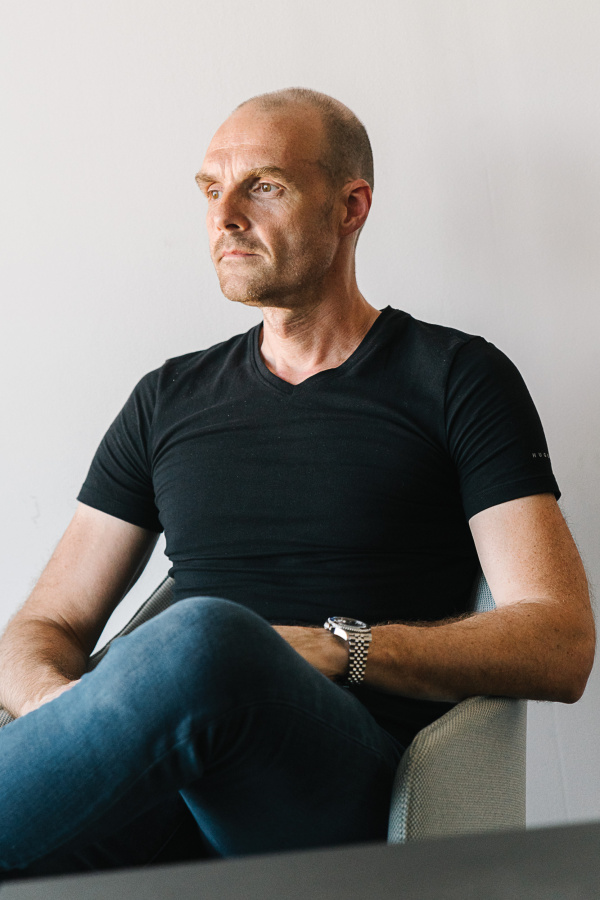
Martin Eyerer is Factory Berlin’s chief innovation officer. Photo by Chris Force
Teetering on the edge of Kreuzberg is Görlitzer Park, a small, non-descript park on the bank of the Spree. Unremarkable as far as Berlin parks go, Görli, as locals refer to it, has an infamous reputation as Berlin’s “24 hour supermarket for drugs,” filled with punks, anarchists, and squatters. The city has struggled to curb drug sales, trying everything from a controversial zero tolerance policy to creating a legal drug-selling zone behind spray-painted lines. While government continues to muddle along, gentrification is fast at work. The park is now a great place to stumble upon fresh almond croissants, and Google, WeWork, and Mozilla all call the area home. As does Factory Berlin, aka “Europe’s largest club for startups.”
- Inspired by Andy Warhol, Factory Berlin brings innovators from all over together to share ideas. Photo by Chris Force
The 150,000-square-foot networking hub for corporations and startups is where I met Martin Eyerer, the group’s chief innovation officer. This being Berlin, though, our conversation started off talking about electronic music. “I’ve been DJing since 1986 but moved to Berlin in 2006 for the music,” Martin says. It turns out, in addition to being a savvy entrepreneur (he cofounded Riverside Studios), he’s also a successful DJ with more than 200 record releases under his belt. Despite setting out to be a lawyer, his career gravitated toward finding a balance between his creative and business sides. “I ended up canceling my law studies right before my final exams—which to my family was quite shocking.”
- Factory Berlin goes beyond business with an adult ball pit and cozy working nooks. Photo by Chris Force
- Factory Berlin. Photo by Chris Force
In 2018 the leadership at Factory Berlin realized Martin’s ability to build authentic links between musicians and corporations and brought him on help foster organic creative and business collaborations. “Tech people are super creative. There is no gap between tech and creative. Some have a business-driven purpose some have a creative purpose, and when you bring those people together they’re very interested in collaboration. I see benefits for everyone,” he says. He finds Berlin in particular is a powerful source for inspiration, new ideas, and collaborations, “People come to Berlin to get inspired. This is a movement. We have no rival.”
Chief Audio Engineer, Bose Automotive
Tobe Barksdale
- Shades of eye-catching green have long been part of the Porsche 911 story line, with Lizard Green revealed in 2019. Photo by Chris Force
Bose believes in the power of sound. Bose Corporation got its start in the mid-60s when founder Amar Bose, a professor of electrical engineering at MIT, dove into the field of speaker research. His technical knowledge paired with his creativity led to many firsts in speaker and headphone design. In 1983 Bose began to bring its premium sound solutions to the automotive world. The Bose automotive division remains committed to one thing: Providing the highest quality car sound systems available. Today Bose works one-on-one with the world’s top automobile manufacturers to create custom audio solutions.
- Photo by Chris Force
“For every car or truck we tailor the system to the mission of the vehicle. A high-performance sports car like the Porsche 911 needs a high-performance audio system, both to attend to the mission for the end consumer who is seeking performance and to handle delivering high-quality audio during a noisy, spirited drive,” says Tobe Barksdale, chief audio engineer for Bose Automotive, who has been at the company for 34 years. It’s one of the first things you notice about the Bose surround sound system; even outside of Berlin on the speed limitless Autobahn, the music was not just clear and powerful but seemed perfectly in balance with the Porsche, a mix of raw power and refined handling. “Our goal is to be consistent with the feeling of the vehicle,” Tobe says.
- Photo by Chris Force
That perfect balance took years to design. “We get access to early Porsche prototype vehicles to make the first set of measurements and to bring that targeted sound into the vehicles. We perform a joint check with Porsche engineers for problems in early stage vehicles so they can be addressed. For instance, if the door has an undesired acoustic vibration, Bose audio engineers bring it to the attention of the Porsche audio team. The job of creating great sound is a collaborative effort between people at both companies to ensure we deliver a robust package. Our objective is to make the music seem as realistic and lifelike as possible.”
- Photo by Chris Force
It’s not surprising that a key element when working for Porsche is designing for speed. “When testing AudioPilot (Bose’s proprietary noise compensation tech) for a Porsche, we have to evaluate it under actual driving conditions. The good news is in Germany it’s possible to do the high-speed road testing on the Autobahn. Initial dynamic testing and tuning on a new model is done on a test track with a Porsche test driver and a Bose engineer making measurements and adjustments. As a final check, Bose engineers take Porsche cars out on the highway for qualitative, behind-the-wheel evaluation and fine tuning to make sure that AudioPilot is properly addressing the sonic needs in the vehicle at speeds up to 125 miles per hour.
This article originally appeared in the Fall/Winter 2019 issue of Sixtysix with the headline “Into Berlin.” Subscribe today.
Studio Sixtysix is the in-house creative agency to Sixtysix magazine. Studio Sixtysix stories are conceived, produced, and edited by Studio Sixtysix.
